Gemert van, Arnoldus Michiel.
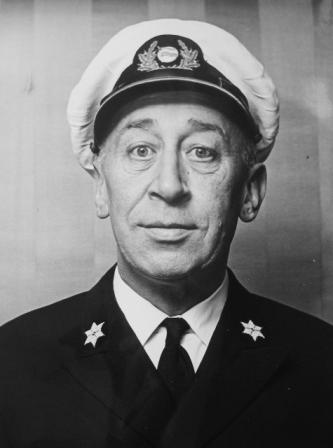
Captain “George” van Gemert. This photo is the early 1960’s. (a)
This is the biography of Captain Arnoldus, Michiel van Gemert. It was quite hard to find material about him until I came in contact with his nephew and via him with one of his sons. The challenge in this case was that Captain van Gemert had never been very much in the spot light due to the fact that he was not a passenger ship captain. He belonged to the group of un-sung heroes who manned the cargo ships and did not get in the passenger ship rotation before 1974.
His son recollects that when the split came in 1974, he choose for the cargo side. That made his career not less fascinating as it encompassed the 2nd world war and the change of Holland America from having traditional cargo ships into venturing into age of containerization
Once contact had been established with the son a real treasure trove of information became available as Captain Van Gemert had painstakingly recorded all his voyages but also maintained a photo album which gave a very good oversight of the progression of his career.
Arnoldus Michiel van Gemert was born on 20 November 1918 in the municipality of Raamsdonk in the Netherlands as a son of Mr. Wilhelmus Adrianus van Gemert and Mrs. Margaretha, Adriana de Wit. His father was a train driver for the National Railways. When growing up, he was known in the family as “Nol” which is a short cut for Arnoldus. However at sea he was known as “George”. This was a nickname given to him by an American friend who thought he looked like a film star who had this name. So where appropriate we will use this name in the biography.
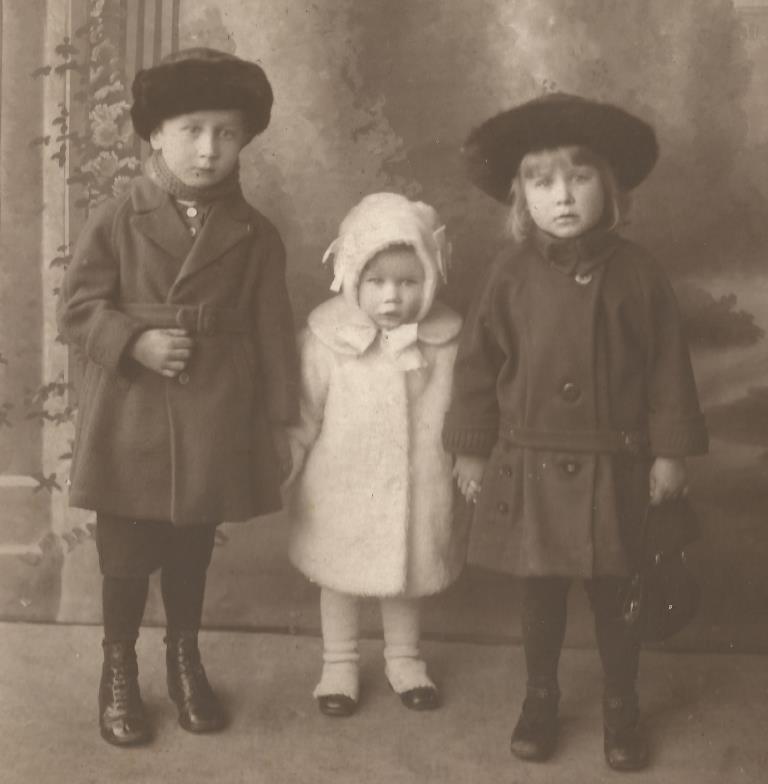
The family photo Album yielded a photo from his very early years. left to right: Arnold being the oldest, Riet, being the youngest and Sjaan being the middle sister.
The name “Van Gemert” means coming from the area, town or land called “Gemert”. When Napoleon introduced central registration in the Netherlands, a forefather must have adopted this town of origin as the family name. Both Gemert and Raamsdonk are in the Province of Brabant in the southern part of the Netherlands. So his family came from “below the rivers” as the Dutch call it. Because of this geographical distinction the focus of the area was more on Rotterdam than on Amsterdam and that normally influenced any plans for schooling and trying to find employment. Especially if you wanted to go to sea. Why he wanted to go to sea is unknown but his family settled in Rotterdam when he was still very young and when later on moving house, they remained in the city of Rotterdam, so it can be assumed that he was influenced by the port and it ships as the city of Rotterdam was completely built around the port.
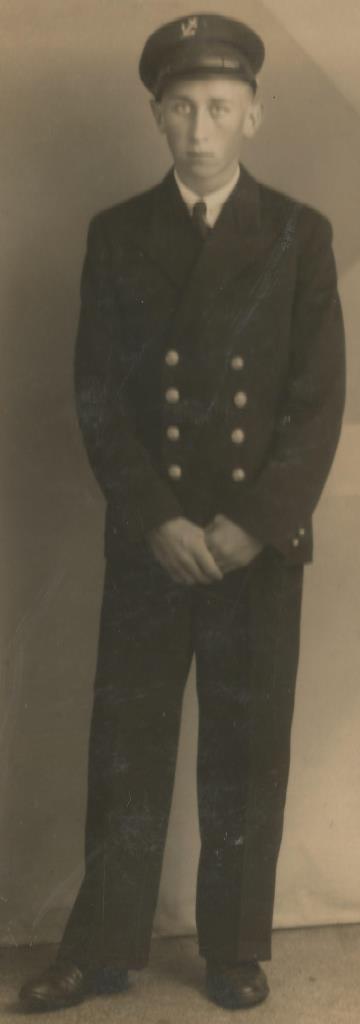
In School uniform. An usual photo as the school did not have a school uniform for most its existence.
In 1935 he enrolls in the 2 year navigation training of the Nautical School in Rotterdam. Close to home which enabled him to stay at home instead of going for the boarding option which most other nautical schools worked with. Still he was issued with a uniform which according to an uniform expert was quite unusual as the Rotterdam school was not known for this; being a non-boarding school. It was one of the few nautical schools in Holland who completely abolished the school uniform at an early stage.
In 1937 he passes his School exam for 3rd mate and is then ready to go to sea. We do not know if he wanted to join Holland America straight away or not but taking the world’s economic situation into consideration (The world was only slowly emerging from the 1929 depression) I think he was quite happy to join any company who was willing to take him. And thus he joined Rotterdam Lloyd (*) and was assigned to the ss Blitar (1). He joined on the 4th. of June and stayed until the 4th. of October which was a four month period or one round trip.
(*) the Netherlands had three main companies who divided the trade between the Netherlands and the colonies in the Dutch East Indies. There was the company from Amsterdam (The Netherland Line or Stoomvaart Maatschappij Nederland) and the one from Rotterdam. (Rotterdam Lloyd or Rotterdamsche Lloyd. After 1947 Royal Rotterdam Lloyd) Then there was the 3rd one the KPM (Koninklijke Paketvaart Maatschappij or Royal Packet Navigation Company) which ran the inter-island service in the colonies but also had a minor liner service to the home country and Australia. The KPM was a joint venture between the first two mentioned.
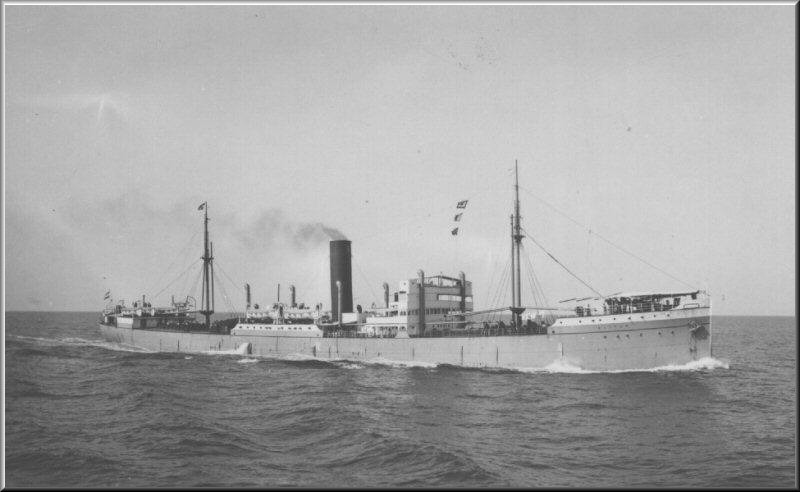
The ss Blitar was a cargo ship of 7065 gross tons and had been built in 1923 in the Netherlands. It had one triple expansion steam engine. It was mainly engaged on the Far East Service from Rotterdam through the Suez Canal. In the Second World War she served as an Armed Merchant ship and was torpedoed on 5 April 1943. (b)
Upon return home he directly had his medical papers renewed, no doubt with the eye on getting a new contract to complete his 365 sailing days needed for validating his 3rd. mate’s license. For unknown reasons there is no 2nd entry as apprentice in his Dutch Seaman’s book but he must have been at sea somewhere. The only logical conclusion is that he sailed on a foreign flag ship. Obviously with success as on 31 March 1939 he receives his 3rd mate’s license from the Dutch Government.
Now he has a bit of luck as Holland America had just taken over the Red Star Line with its two ships and was in need of crewmembers. So on 07 June 1939 his career started with Holland America, a career which was to last until 1978.
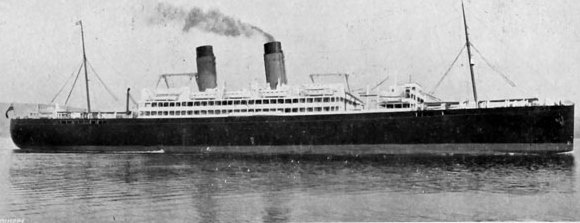
The ss Pittsburgh. The ss Pennland had been built in 1920 as the Pittsburgh for the White Star Line. Her sister was the ss Regina (later ss Westernland) Both sailed on the Liverpool to Boston service. In 1925 both were transferred to the Red Star Line for the Antwerp service and renamed in Pennland. She remained on this service until 1940 when she becomes a troopship. Sunk by bombs in April 1941 near Crete. (b)
The Red Star Line was from origin an American company which sailed with British Officers from Antwerp in Belgium. It was later on bought by a German entrepreneur Mr. Arnold Bernstein who had made a successful entry on the Trans-Atlantic with importing American cars to Europe. Simply by being cheaper and being better organized than the competition. He then wanted to apply this business model as well to the Trans-Atlantic Passenger Trade by staying outside the “conference system” which regulated and stabilized the ticket prices for all companies.
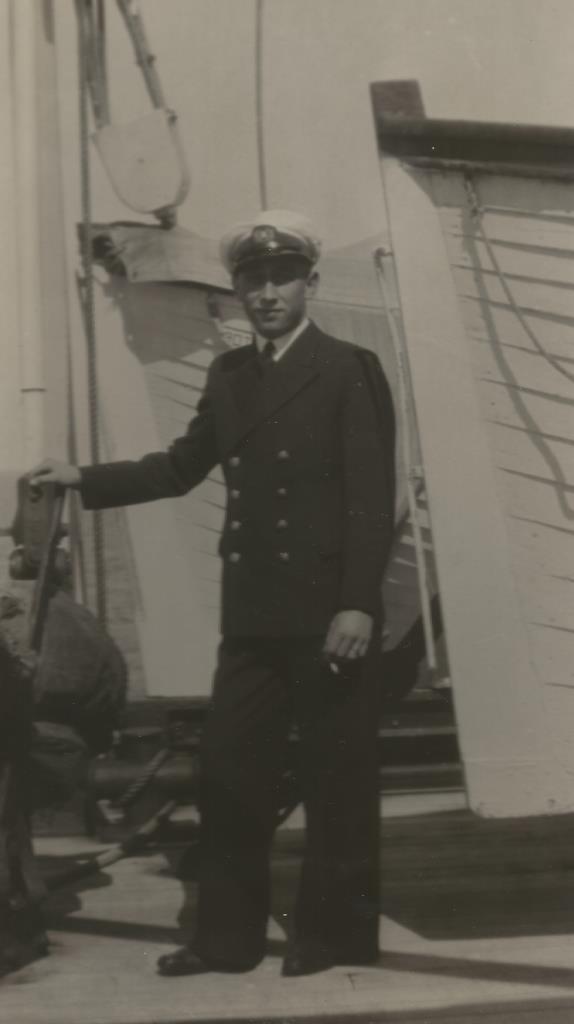
On the Boat deck of the ss Westernland.
He bought the defunct Red Star Line in 1934 and was initially quite successful. He had however one challenge, he was Jewish and based in Germany, and having a successful business did not go down very well with the Nazi Regime. He ended up in Jail and that left the Red Star Line without the drive that it needed to prosper. The American banks who had being overseeing the Red Star Line sale and were still owed the mortgages on the ships were getting nervous and arranged a quick sale with Holland America. Mr. Bernstein was eventually released but had to wait until after the end of the 2nd world war before a definite settlement could be reached between those bankers, Holland America and himself.
In the meantime Holland America was quite happy to run the Antwerp to New York Red Star service in conjunction with their express service from Rotterdam to New York. And thus Van Gemert found a berth as a new 4th. Officer on the ss Westernland and embarked on her maiden voyage for Holland America. (To cash in on the Red Star names, Holland America decided not to rename the ships to names with a DAM ending). He remained with the ship until Aug. 1939 when he was transferred to the ss Maasdam (II) which was classified as a passenger ship but had a lot of cargo space was well. He remains on that ship until Febr. 1940 when after a short leave he is transferred to the ss Pennland which was the 2nd ship of the Red star Line.
In those days Holland America changed all their crews in the home port of Rotterdam but the Antwerp service did not provide too much of a challenge as Antwerp was only a short train distance away from Rotterdam. But as this was in the days that people in the Netherlands did not travel very much, it was considered quite an adventure to be relieved in a foreign port; even for sailors who thought nothing about sailing all the way around the world. He signed on, on the 7th. of March 1940, and the Pennland departed the next day from Antwerp for a regular crossing to New York. The Netherlands were not yet involved in the war and thus it was not hampered in where it called. But it was a long voyage as in each port the security measures were strict. So the ship was stuck for inspections for 8 days in Dunkirk, 3 days in Southampton and then faced a slow disembarkation process in New York. Every Holland America Line ship was sailing to capacity as large numbers of Americans returned to North America and other who emigrated out of troubled areas (Or were kicked out after paying large sums to the Nazi Government for their freedom).
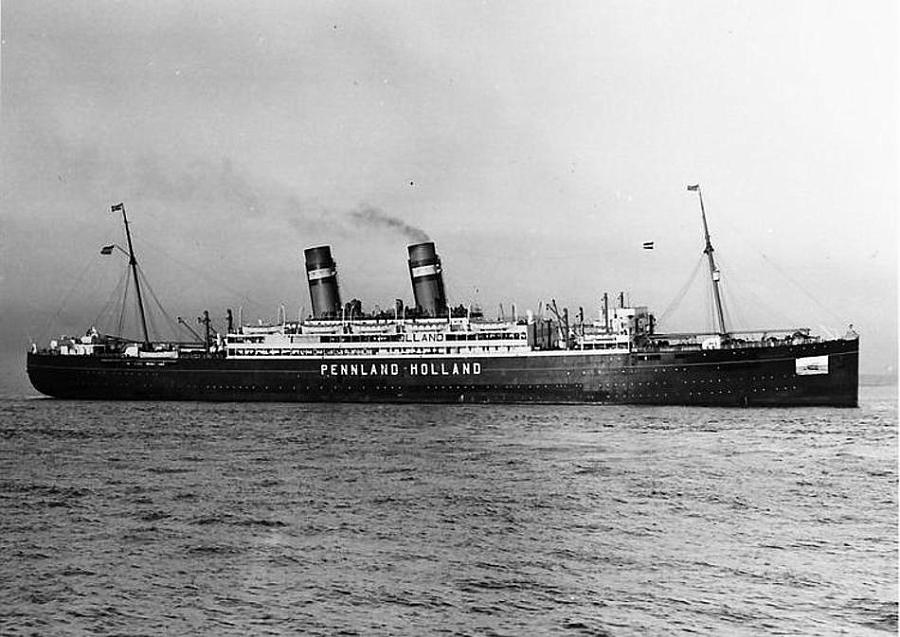
The ss Pennland in Holland America Line colors. The Dutch flag at the bow and ships name and home country on the side. Indicating that this was a neutral ship and not yet involved in the Second World War, when it broke out between Nazi Germany, Great Britain and France. (b)
The ship made one return voyage and then left Antwerp for the 2nd round trip on the 27th of April from which it could not return as by that time the Netherlands and Belgium had become occupied territory. She went briefly into lay-up while the company was considering to send her onto the New York – Java service. That did not work out because due to the Netherlands being occupied now the ship was seized by the Dutch Government for war duties. They sent the ship to Liverpool where it arrived on 13 July to be converted into a troopship.
The outbreak of the war caused a great upheaval among the families of the sailors as they were more or less used to see their beloved for one or more days in between voyages. For the crews of the ships now out of Holland & away from Rotterdam it meant nearly six years before a reunion could take place. Also for the parents of our 4th. Officer it must have been very distressing. If this was the case for him as well is another story as most of the young officers saw this period as a great adventure and it came with the bonus of now being able to spend time ashore in New York while the Dutch Government and HAL tried to figure out how to use the ship.
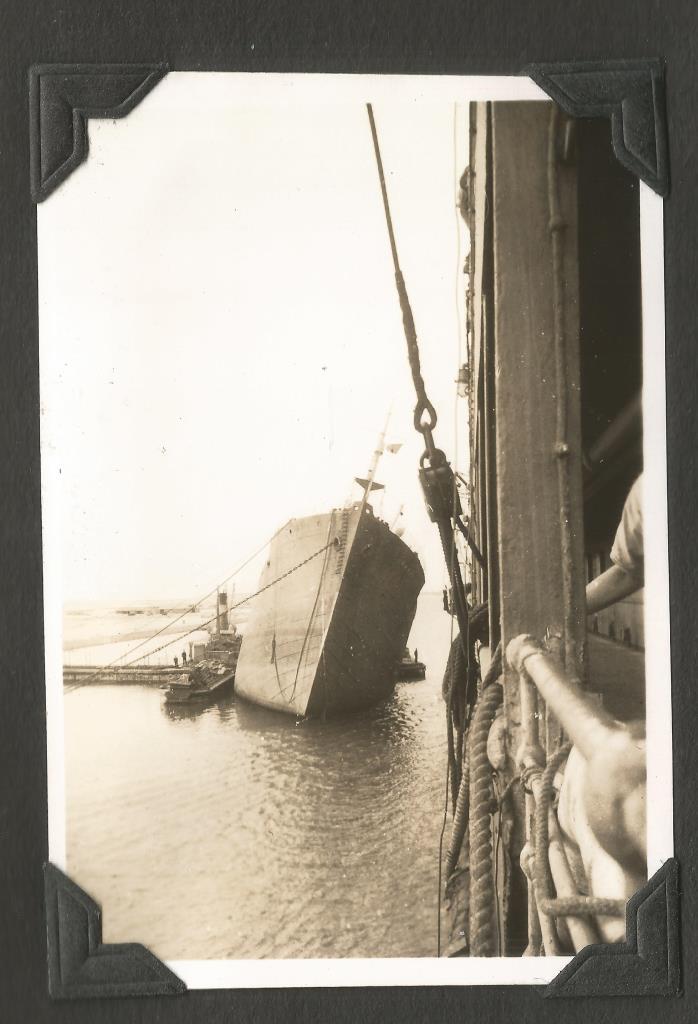
Sailing through the Suez Canal on 23 March 1841 and snapping a photo which was totally against the Rules and Regulations.
When she re-emerged from the shipyard on 28th. of August she was engaged in operation “Menace” with the idea to send 1200 Free French under General De Gaulle to Dakar and liberate the French Colonies. A foothold there would also help with the Allied convoy work. The ship together with the ss Westernland reached Dakar but a landing operation is not deemed feasible and the “Dakar Invasion” was cancelled. She continues to make trooping voyages and also transports Prisoners of War with 4th. Officer Van Gemert still on board.
On 29 Jan. 1941 (**) the ship leaves on what will be her final voyage hopping around North Africa with transporting troops to various areas while they are trying to stem the German invasion. She sails to Suez and then through the canal to Port Said on what is described in the captain’s voyage listing as a “special mission”. Eventually the ship arrives in Alexandria.
(**) (ED) I have these dates from the personal journal of the captain in which he recorded nearly every voyage and port of his career. Keeping a diary and or personal records, or making photos, was officially not allowed and transgressions severely punished but knowing that other officers have done this as well, I do not have the impression that Dutch sailors were unduly concerned about threats of jail or even worse.
While here the British War Cabinet in London decides to send 56000 troops to Southern Greece to stop the Advance of the Germans. The ss Pennland is assigned to “Operation Lustre” and carries between 1 and 16 April approximate 6000 Australians to Greece in two voyages. On the first return voyage several hundred Greek Civilians are evacuated. Then she is ordered to drop anchor in Salamis Bay near Athens and wait for orders.
The Germans prove to strong for the Allied troops landed and an evacuation becomes necessary. The ss Pennland is assigned to “Operation Demon” on the 22nd. and sails for Megara bay on 23 April being part of the 2nd wave of relief ships. with the order to evacuated approx. 4000 Australian Troops. On the 25th. while close to Crete (37.10 N and 23.50 W), she is attacked by German war planes and the bow of the ship.
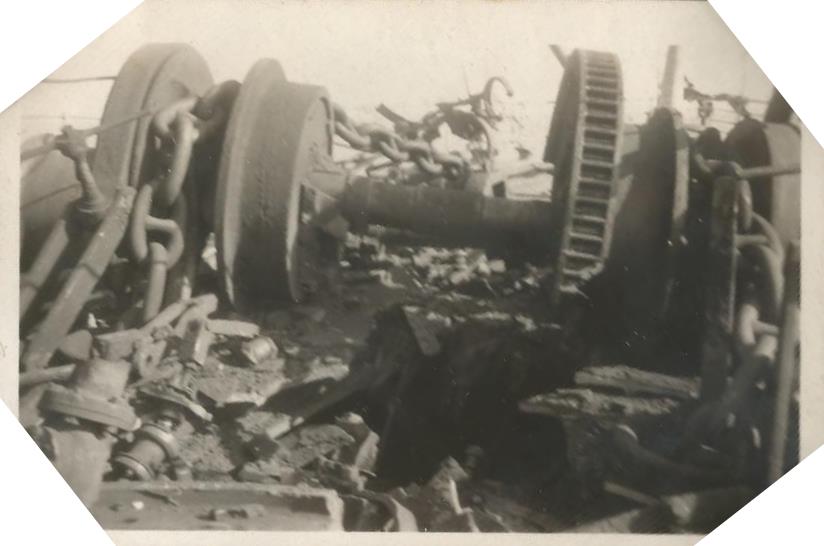
The Bomb damage on the bow from the first aerial attack.
Bombs are dropped and the ship is strafed by bullet fire and starts taking on water. Apart from direct hits, the ship is also damaged by near misses / exploding bombs in the water around the ship. The Captain and the Bridge officers on duty survive but the Captain was wounded by the flying debris. Frantic attempts are made to close the holes in the Watertight bulkheads between hold 3 and 4, But some of the oil bunker tanks are leaking so much that some of the boilers have to be extinguished to avoid fire breaking out. Still the initial idea is to continue the voyage to et the 4000 troops on board and to safety. But the the water ingress is hard to control and it is decided to slowly sail back to Alexandria following the HMS Griffin as all the navigation equipment has been destroyed.
The next evening the ship is once again attacked with a bomb going straight through the ship and near misses cracking open the ships hull. 3 engine crew are instantly killed. Later another crewmember would succumb to his wounds.
The ship is deemed to beyond salvage and Captain Van Dulken orders the ship to be abandoned. By the time the last lifeboat is safely away from the ship, she is up to main deck under water, The 303 surviving crew sail with their lifeboats to the British HMS Griffin. This ship then sinks the ss Pennland by gunfire.
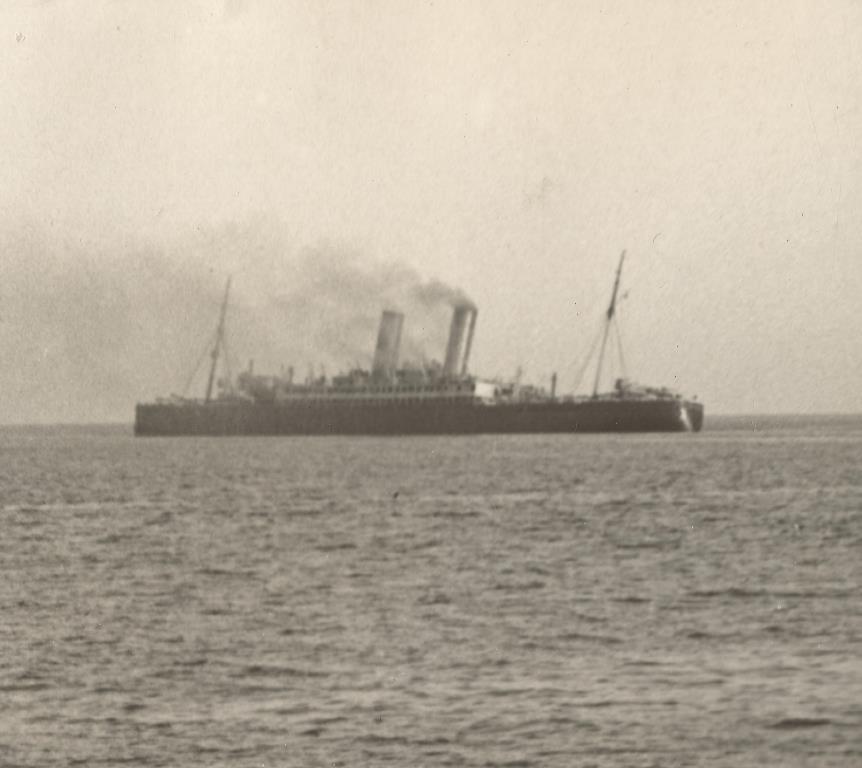
25 April 1941. The ss Pennland on fire and abandoned by her crew. Shortly after his photo was taken the ship would be scuttled by means of friendly fire.
When in dangerous waters, the operational routine was for the Captain to be constantly on the bridge and he would be assisted by the Jr. Officers. Such as the Cadets and the 4th. officers. The 3rd. officers, 2nd officers and Chief officer/Staff Captain would coordinate the work of the gunnery crews. This would have been the main function of van Gemert during the attack.
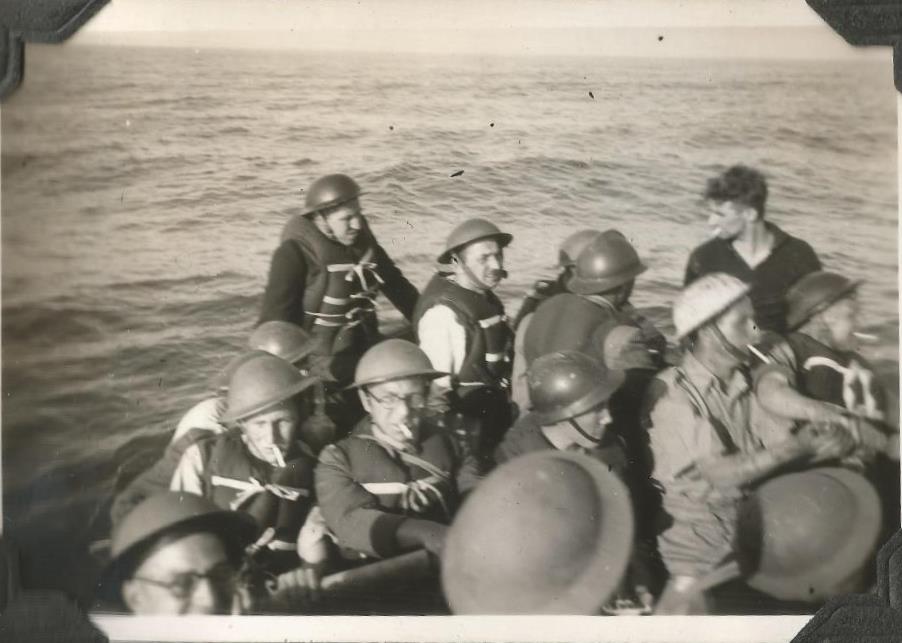
Survivors in one of the Pennland’s Lifeboats. (ED: most likely a photo taken by himself)
For relaying orders, communication and supervision. The gunnery crews were mostly British and American and were on loan to the ships depending on the area of sailing and thus had to work with a communication officer as they were not familiar with the ships operation. (ED: I believe that Van Gemert was involved in the same as he is later seen with a gunnery crew in a lifeboat, most likely commanded by himself as each navigation officer was also in charge of a lifeboat.)
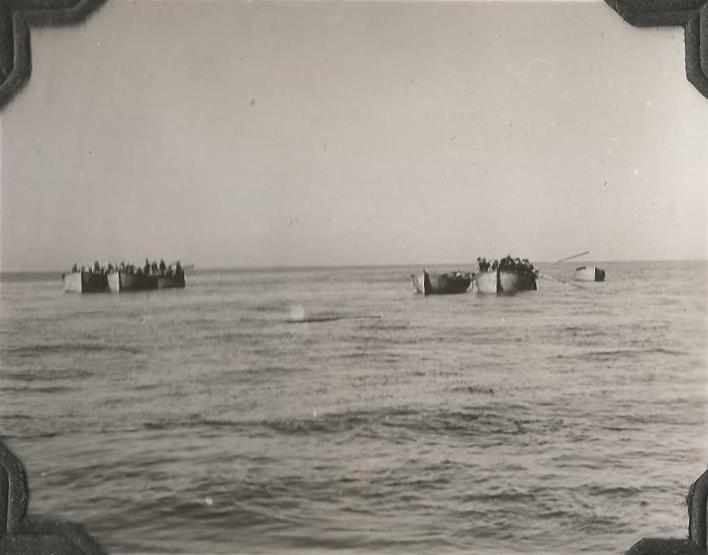
Lifeboats being gathered together for the journey to HMS Griffin. Luckily it was flat calm weather.
The surviving crew reached the British HMS Griffin, a destroyer which was on scene as an escort ship for this troop transport. (There were 3 more Dutch ships in the convoy and several from other countries) While on board they had to witness the destroyer “destroying” the ss Pennland and afterwards they sail for Crete, where everybody is landed on 26 April in Suda Bay. Crete was overflowing with evacuated military and crews from sunken ships and there was no accommodation for all these people. The Pennland crew was delegated to a little town called Canea with the advice that there would be camp there. this turned out to be an Orchard but here they met the crew of the ss Cottica (KNSM) which also had been torpedoed. It turned out that “Command” had decided that this orchard was the place to assemble all the Merchant seamen. transport is then arrived for the overnight trip from Crete to Alexandria where up to 2000 men are assigned to each available ship. In the end about 50000 were repatriated this way including 42000 miliary personell.
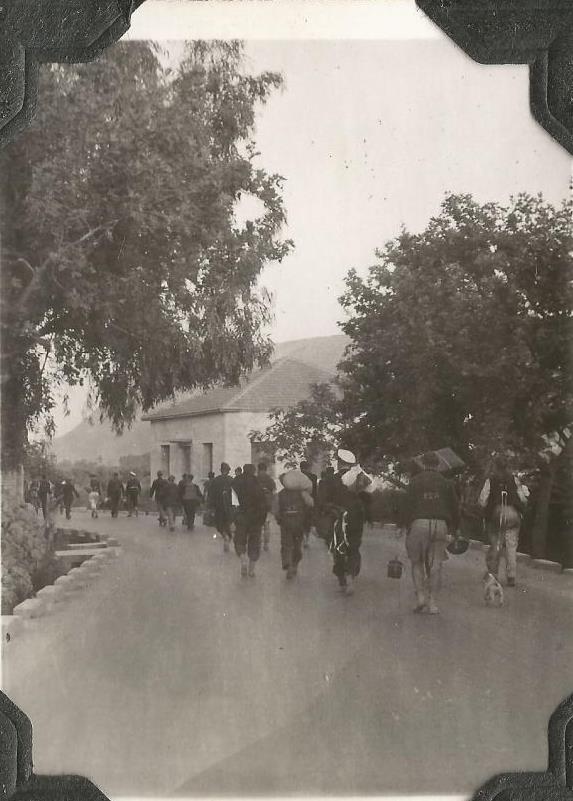
Crew Landed at Suda Bay and walking towards temporary billets
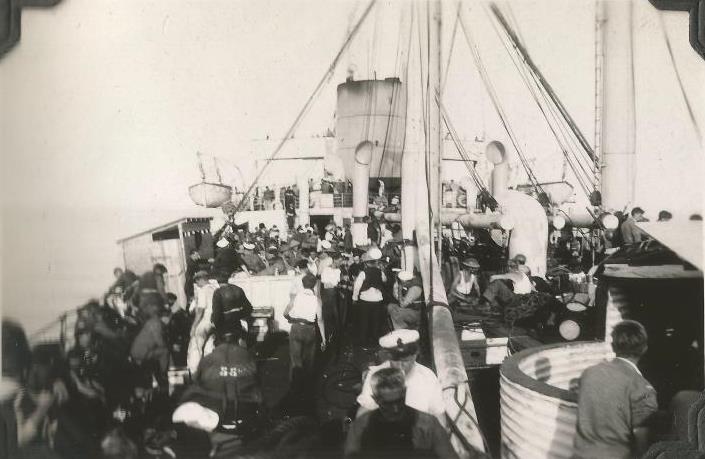
Transport with the ss DeLane from Crete to Alexandria All men had to sleep on deck with the few cabins available used for wounded and female personnel such as nurses.
Transport arrives on the 30th of April in the form of the ss Delane which shuttles everybody in an overnight voyage back to Alexandria. 14 days later it goes by train from there to Suez where the crew merges into a group of 750 persons, joining for the journey on board the ss Duchess of Atholl back to England. Although the aim was to go back to Liverpool it was not as a straight voyage as space on board any ship going anywhere was at a premium.
And so they were landed on 13 June 1941 in Durban and boarded the ss Empress of Australia the same day. That ship then sailed via Durban, Capetown and Freetown to Liverpool where it finally arrived on 06 August 1941. Van Gemert was the put up in the Holland House (***) waiting there for HAL to decide to do with him. 4 days later he was sent to London by train and then stayed for 20 days in the Ambassador Hotel. From there it went by train to Newcastle as HAL had finally figured out what to do with him. Then 20 days in London, although maybe not planned by the company as such, was not a bad way to forget a shipwreck experience.
(***) Holland House or Houses were a number of cheap hotels in various ports operated by the Dutch Government to have available accommodation for ships crews that were between assignments or those whole had lost their ships. There was one in Liverpool, one in London and one Greenock Scotland. (There is still a Holland House Hotel in Liverpool, but I have been un-able to ascertain if the current one is the same as the one from 1941)
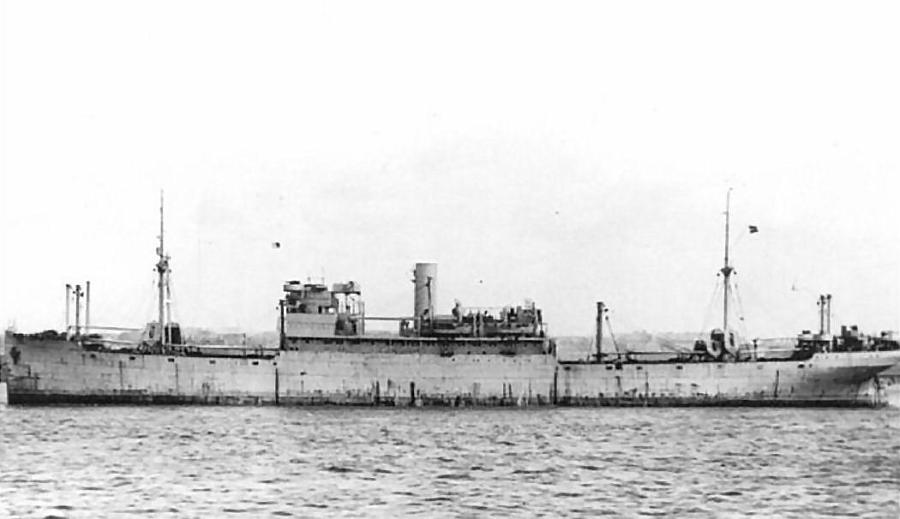
The ms Delftdyk. One of the first motorships of the company and constructed, with limited passenger accommodation, for the West Coast service to Vancouver. (b)
His next ship was the ms Delftdyk. This was a combi -passenger freighter especially designed for the Europe –West coast service which ran from Hamburg all the way to Vancouver. When the war commenced she was in high demand as she could carry special equipment and the attached support troops at the same time. He joined on the 10th of September and 4 days later witnessed another air attack while sailing for Oban. Luckily it all went well and there was no damage. From there the ship made a round trip to Freetown and then went back to Liverpool. Nothing special happened except that the ship lost its convoy on the return leg to Liverpool. This was nothing unusual during convoy sailings if the ships ran into heavy fog or bad weather. It could very effectively scatter a complete convoy as lack of radar made it impossible to keep the ships in formation. Still the bridge officers did not like it very much as they thought it reflected badly on their navigation skills.
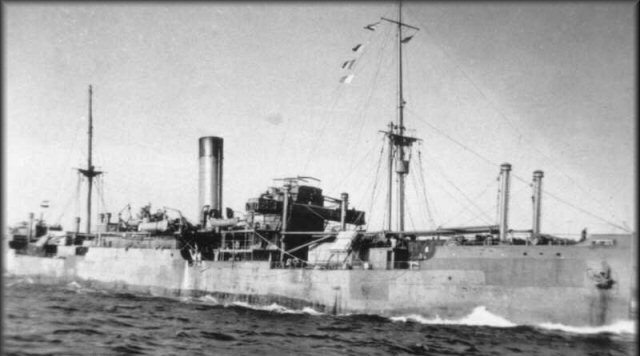
The ss Edam. Fourth ship of this name and a name that has not been repeated since in the company history. (b)
In Liverpool then comes the transfer to the ss Edam (IV) on which he only sailed for the crossing to New York. If there was the plan to remain with that ship for longer we will never know because he was hospitalized with Malaria from 18 March to 4 April. His war record quotes: In hospital and in the reserve pool in New York from 04 March 1942 to 08 April 1942. (Wages fl 93.60 being 70% of fl 117,– due to not working)
On 9 April the ms Noordam sailed from New York with on board a brand new 3rd officer as the company had reviewed the promotion list and found out that he was now near or at the top. (In those days promotion went strictly by seniority as long as you performed well.) The ms Noordam was a passenger ship good for 240 passengers but also had a large cargo capacity and together with her three sisters had been especially designed for the intermediate New York service. E.G running directly from Rotterdam and going slower than the Express service of the larger ships.
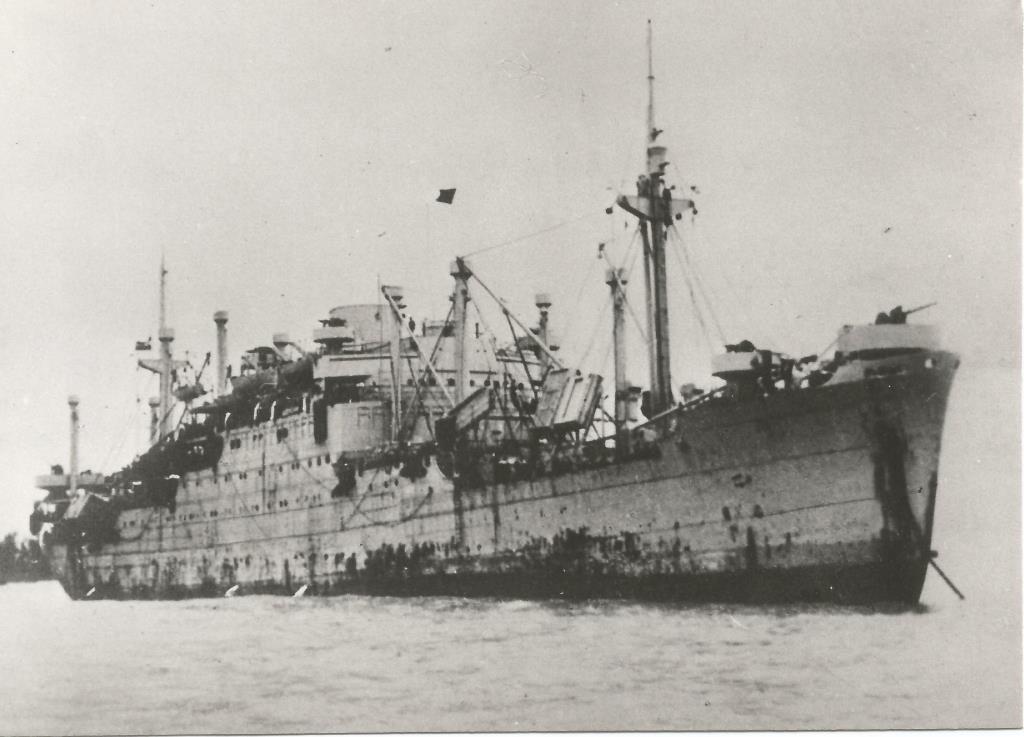
The ms Noordam, built in 1938 and a sister to the Zaandam, Zuiderdam and Westerdam. Here seen after conversion and full of troops. (b)
When war came to Europe she had been diverted to the Dutch East Indies service. After the East Indies had been overrun by the Japanese she was also assigned for war service. For this purpose she first made one more trip to Pago Pago and upon arrival San Francisco was converted into a troop ship for 2236 troops.
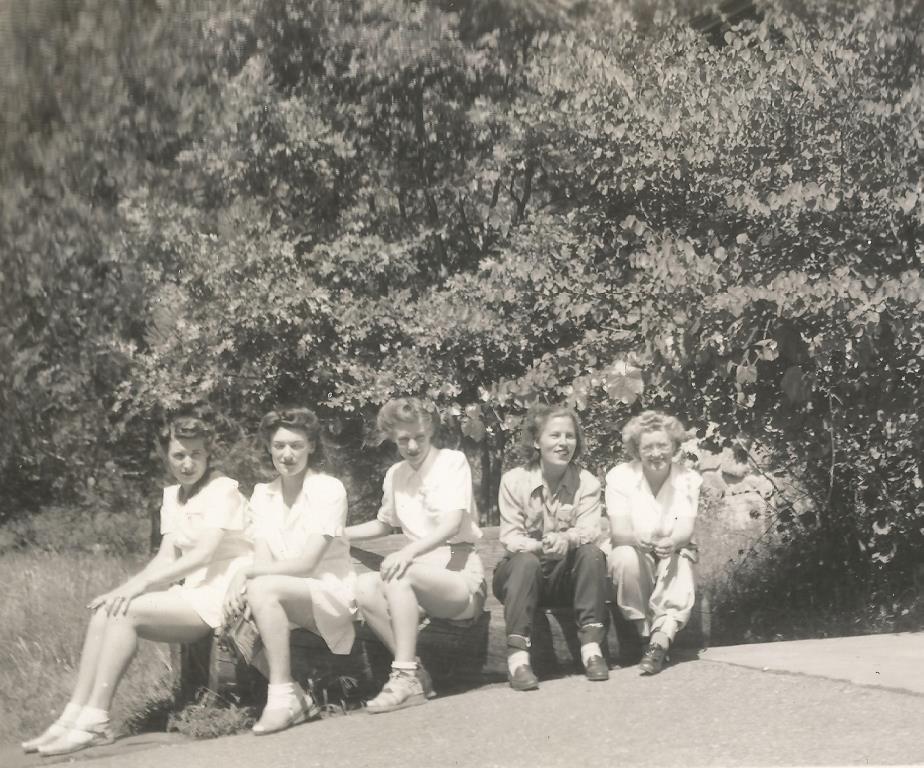
Girls in Yosemite Park. Life ain’t that bad for a sailor if you know where to go………………
What did 3rd officer Van Gemert do in that period? He went sightseeing & camping with a whole group of crew and girls to Yosemite Park. This was not unusual. The Americans had a program designed to invite sailors from the fleet into their houses for some R&R and as the ships tended to return to the same port the sailors (male and female) became a part of these families. Joined the same clubs, attended the same Churches etc. etc. and made arrangements for part of the crew to get out for some sightseeing. In a newspaper interview with the Tampa Tribune on 13 June 1965 Capt. Van Gemert confirmed that travelling far and wide in those war years was one of his best lifetime experiences.
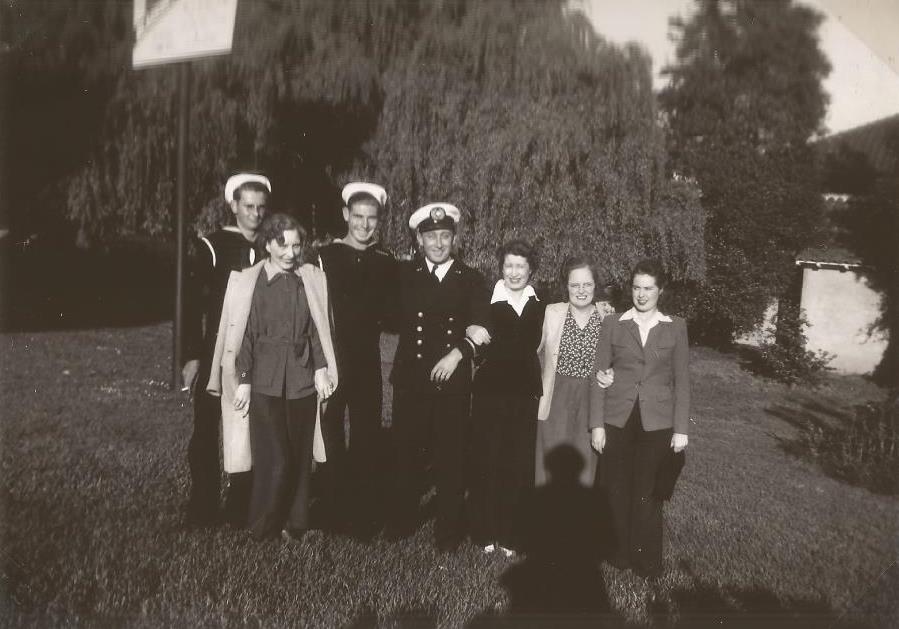
More girls, now in Golden Gate Park.
On the 2nd of September the fun was over and the ms Noordam left San Francisco with 2280 troops on board sailing as far as Noumea. The next voyage went all the way to Welington, New Zealand and the 3rd voyage even reached Port Moresby in New Guinea. Then for the next two years the ship keeps sailing to the Pacific Islands from San Francisco. Slowly following Mac Arthur’s forces who were hopping from island to island driving the Japanese back to Japan.
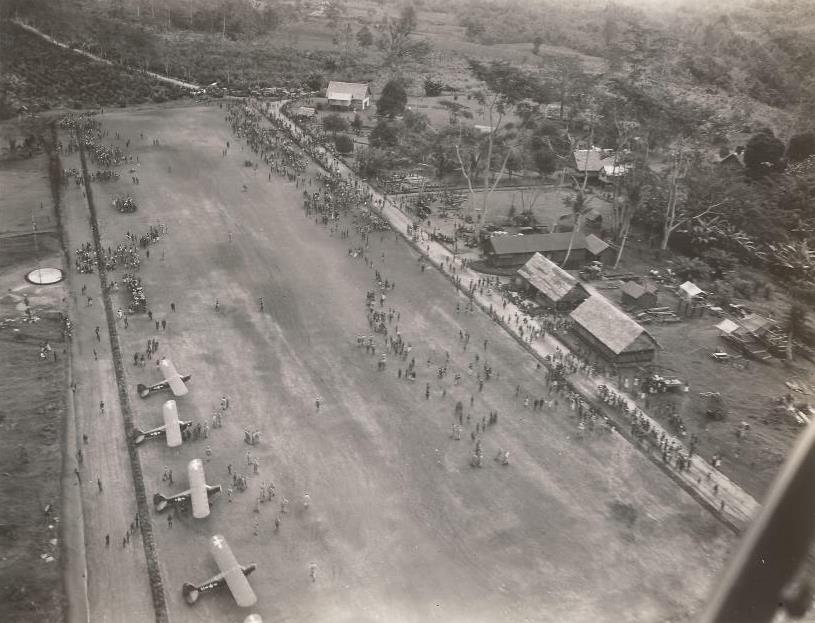
Airplanes discharged from the ms Noordam somewhere in New Guinea
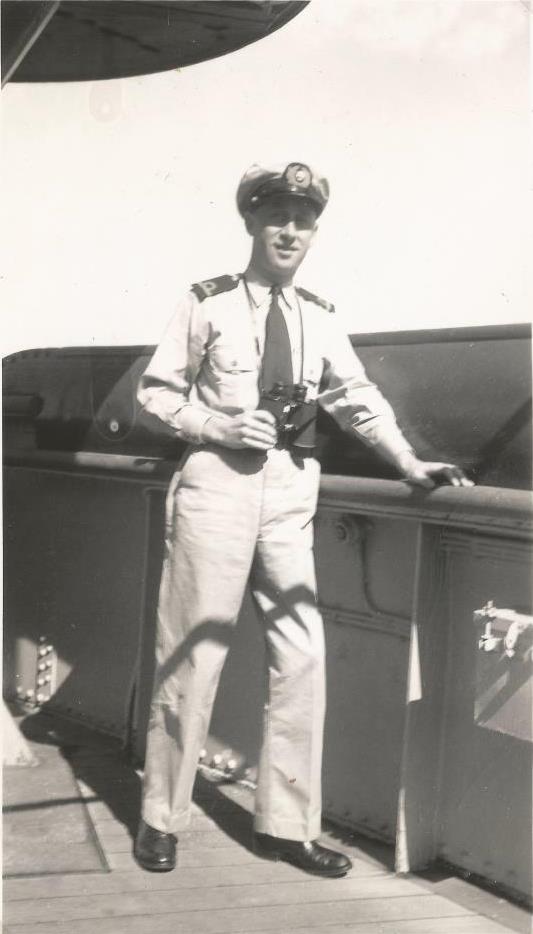
And on the same ship as a watch keeping officer
On 17 June 1945 the ms Noordam leaves San Francisco for the last time and sails through the Panama Canal to Le Havre and then back to New York. After a month of vacation there, George Van Gemert joins the ss Leerdam (II) and sails for home. He arrives in Rotterdam on the 2nd of September 1945. As expected leave follows as the returning ships can be manned by officers who were stuck in Holland for the duration of the war. Van Gemert returns to school and obtains on 15 Feb. 1946 his 2nd mate’s certificate. While doing so he rotates with others, to stand port watches while the ms Noordam is converted back to a regular North Atlantic liner. He makes 4 voyages on the Noordam and is then promoted to 2nd officer.
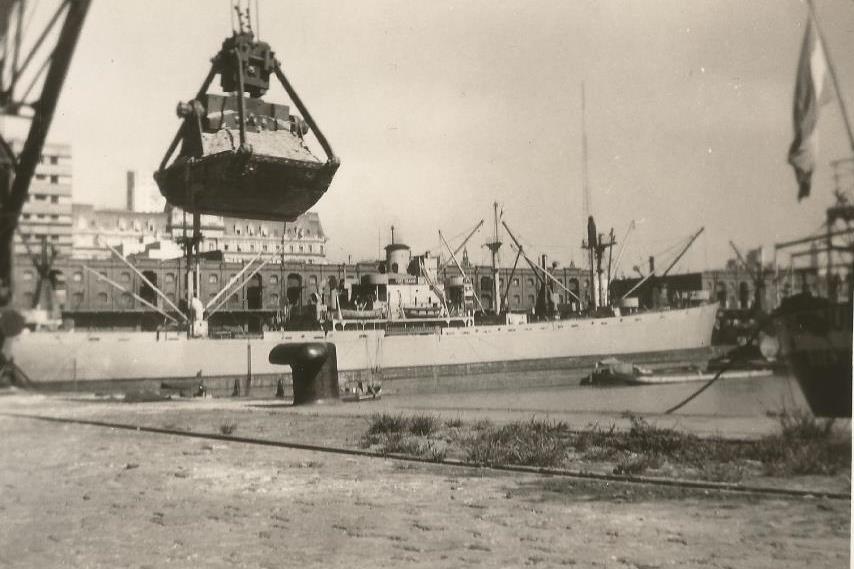
The ss Fort Orange. Bought with help of the Dutch Government. The company eventually bought the ship in 1947 and renamed it in ss Blijdendyk (II). She was one of the 2600+ liberties built during the 2nd world war and was originally a coal burning ship and could reach a speed of 11 knots with following winds
The Fort Orange sailed on the South America service and Van Gemert was on board for one voyage between 30 November 1946 and 23 April 1947. In those days loading was slow and the ship stayed several days in most of the ports.
Upon return in Rotterdam there was 3 weeks of leave and then he went as a passenger on the ms Westerdam to New York as part of the crew to collect the new ss Aardijk. They arrived in New York on 25 May and as the Aardijk did not sail until 23 July, there must have been quite some time to enjoy the city. Records indicated that he was staying for the first week at the Times Square Hotel and that cannot have been bad either.
After the 2nd world war the world’s governments got together to come up with a plan to restore the worldwide economy as quickly as possible. The US government initiated the Lend/lease program which included making available all the surplus cargo ships which had been built during the war.
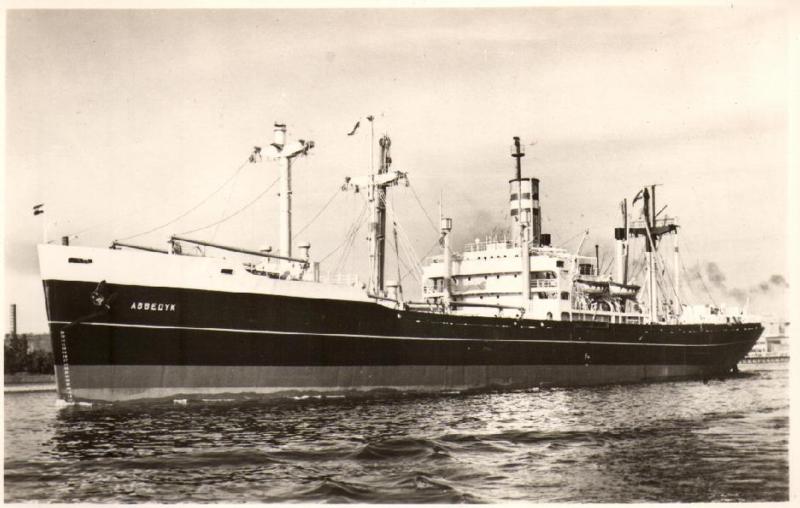
The ss Aardyk of Holland America Line. The company did very little to change these Victory ships after they had bought them and hence the living quarters were very sparsely furnished. (b)
These included the Liberty ships but also the 500+ Victory ships which were a faster version of the Liberty. The regular liner company’s where very much interested in the Victories as with their 15 knot speed they were able to maintain a regular service. The Liberties could only do 10 to 11 knots and were mainly taken on by the tramp company’s. Holland America bought in the end 11 of these Victory ships, the A class, to replace all the ships it had lost during the war. The Aardijk was one of those ships and these ships had to be collected in the ports where they had been put into layup at the end of the war. And thus our new 2nd officer had to travel to New York to collect the ship. A whole group under the leadership of Captain Drost thus sailed from Holland accordingly.
The ship was assigned to the East Coast of the USA and Gulf of Mexico service and he remained with the ship for six voyages and signed off on 21 April 1948. Then it was back to school for obtaining his First Mates License (which in the Netherlands is also the master’s license) starting on the 8th. of May. However the company was short of officers and he was recalled on 20 July to join the ss Edam (IV).
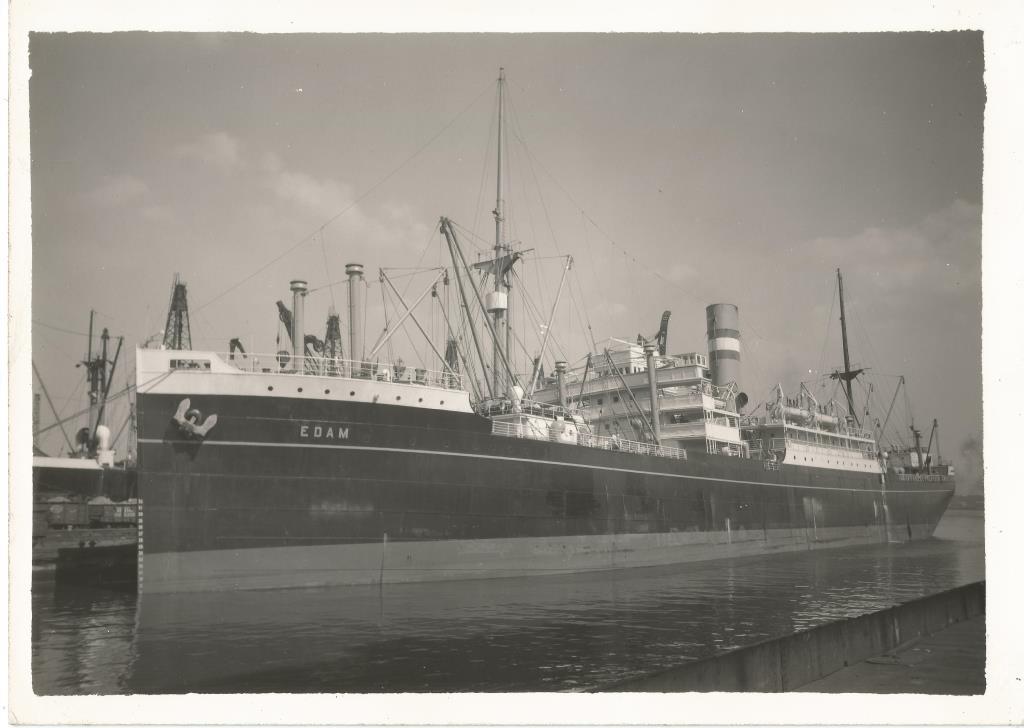
The ss Edam (IV) after the war. Photo by Daniel Flintjer 1948 in Philadelphia. The ship had originally two funnels but the aft one (a dummy) was removed before the war started.
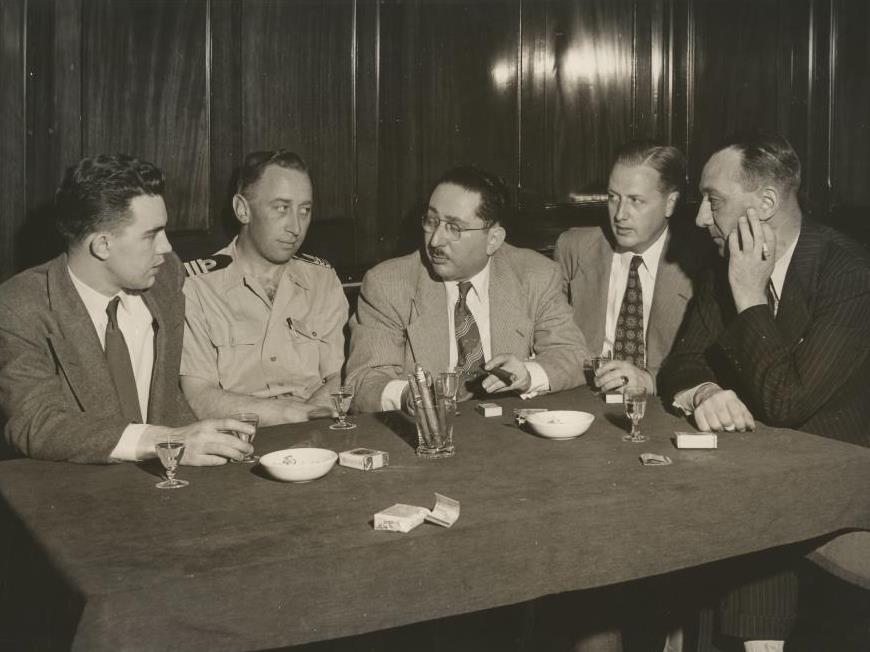
The bane of every Chief Officer. shipping Agents and Officials. Note the glasses; they all expected a drink.
The ss Edam(IV) was a passenger cargo liner and was one of a class of 4 designed around 1920 for the Europe – Cuba – Mexico service but had ended up after the war on the USA east coast port service. He completes one voyage and can then return to school. He passes for his Master license on 24 Nov. 1948. Two weeks later he is send for one voyage to the ss Leerdam (II) a sister ship of the ss Edam (IV) and in service on the same run. Back in Holland on 29 Jan. 1949 he is promoted to First Mate or Chief Officer two days later. 14 days later he is back on the ss Leerdam (II) and remains there for 8 voyages until 01 May 1950.
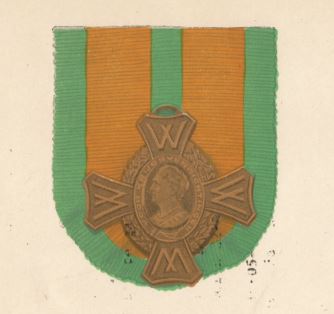
Dutch War Memorial Cross with a relief of Queen Wilhelmina in the Centre.
While at sea the Dutch Government awarded him the War Memorial Cross with 3 Bars (comparable to military campaign medals) for:
- War service Merchant Navy 1940 – 1945
- Mediterranean 1940 – 1945
- East Asia – South pacific 1942 – 1945.
By that time Holland America had established also a long-haul service from New York via the Gulf to the Mediterranean, going as far as Singapore and back. These were 3 to 4 month voyages but the ships on this service did not call in Rotterdam and thus a crew change was complicated. The company solved this challenge by having everybody who was not yet senior enough for the passenger ships do a few voyages on ships which home ported in Rotterdam and then send them out for a year to the long haul service. Van Gemert now being the youngest Chief Officer in the fleet was of course a prime target for this policy and hence he ended up on the ss Soestdijk.
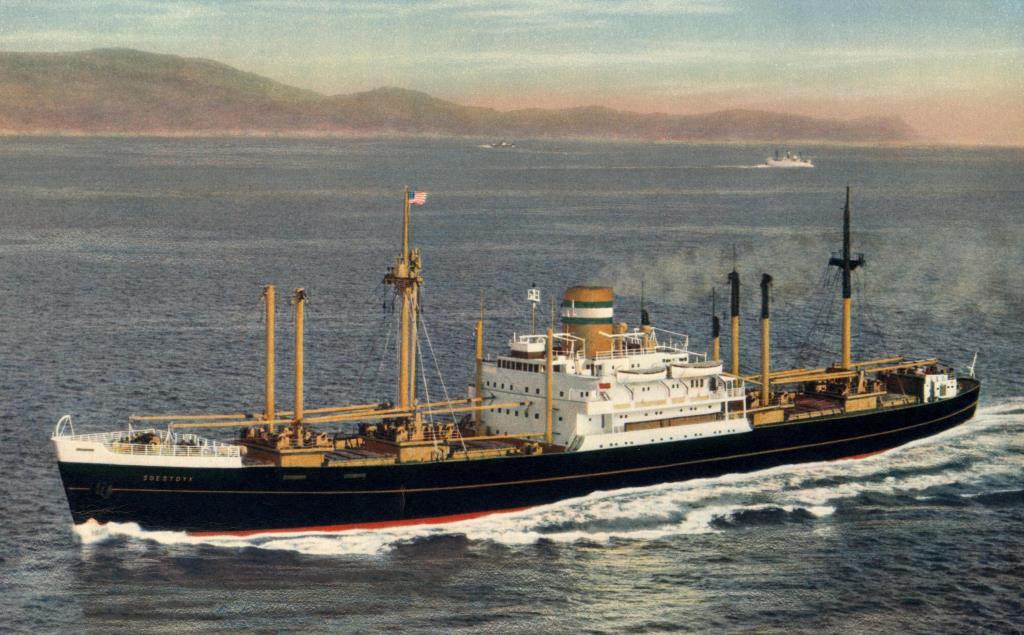
The ss Soestdyk (II) in open waters. (b)
The Soestdyk was not a Victory ship but had been built for the company at Harland & Wolff in Belfast. She was about 2 knots faster than the other ships and could also carry 12 passengers. The service was officially called the New York – Java service but went way beyond the island of Java. An Example of how this worked during the period he now embarked upon is shown below:
Departure 08 may 1950 from New York. Then:
Alexandria – Port Said – Suez – Djeddah – Aden – Belawan – Penang – Port Swettenham – Singapore – Djakarta – Cheribon – Tegal – Semarang – Surabaya – Moesi Ribien – Sunga Gerong – Soerabaja – Semarang – Djakarta – Singapore – Port Swettenham – Penang – Belawan – Colombo – Aden – Suez – Port Said – Halifax – Boston – New York (31 Aug. 1950) – Baltimore & dry dock – New Orleans – Galveston – Houston – Lake Charles – Mobile – Savannah – Newport news – Philadelphia – New York – Alexandria – Port Said – Suez – Aden – Colombo – Penang – Port Swettenham – Belawan – Djakarta – Cheribon – Semarang – Surabaya – Djakarta – Singapore (31 Dec. 1950 -07 Jan. 1951) –Penang – Belawan – Kantang – Colombo – Aden –Suez – Port Said – Halifax – Boston – New York – Baltimore – Galveston – Houston – Beaumont – New Orleans – Newport news – Paulsboro – New York (Arrival 05 April 1951)
Relieved in New York he sailed home as a passenger on board the ms Noordam (II) arriving in Rotterdam on 16 April 1951. After 3 weeks leave he was assigned to the Arkeldijk (sister to the Aardijk). It was only a very short leave but this ship had Rotterdam as home port so each two months there was a week vacation when the ship went up the coast to Hamburg and a relief officer would come on board. (These were often officers who were at school or who had just married or who were expecting a baby). He was assigned to this short service following the Arkeldijk with one voyage on the ms Westerdam to New York and back. Next was being on standby at the shipyard at the Dongedijk which was in refit at Wilton Fijenoord and then was assigned to that ship.
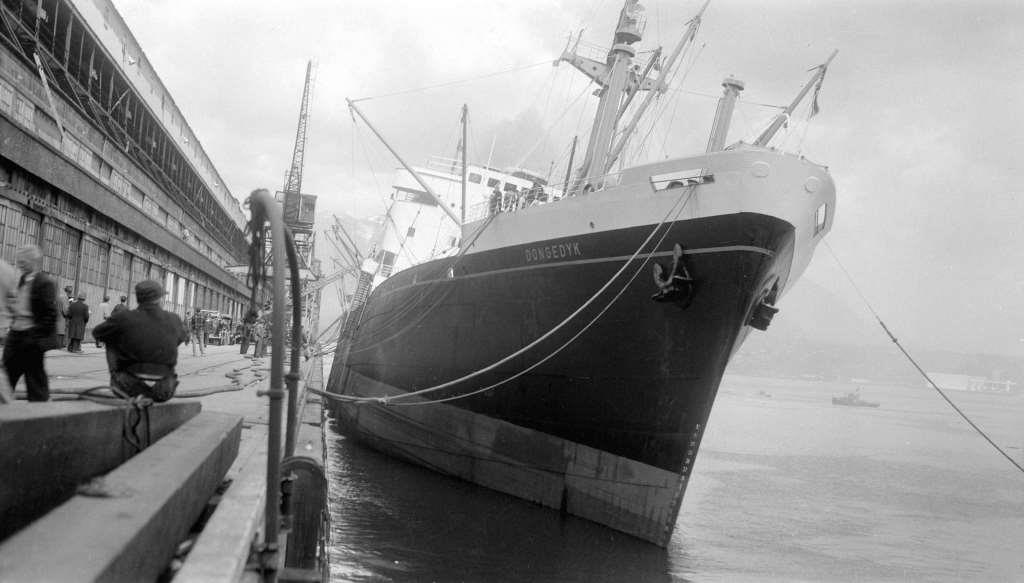
The Dongedyk on 28 April 1952 at Vancouver. Having developed a considerable list due to the water having been pumped into the cargo hold. (b)
He will remain with this ship until July 1955. The ship normally (with occasional deviations)called at Bremen – Hamburg – Rotterdam – Antwerp – London – Panama Canal (bunkering either at Cristobal or Balboa) – Los Angeles – San Francisco – Portland – Seattle – Tacoma – Vancouver – New Westminster and then the same ports again on the return voyage. A complete round trip would last 3 months.
There was some excitement on the first voyage as the ship caught fire in Vancouver in cargo hold nbr. three and the engine room behind it. Luckily it was all extinguished without loss of life but the ship remained at Vancouver for a month for repairs, instead of the normal one or two days.
While being Chief Officer on the Dongedijk an entry is made in his personnel file: Chief Officer van Gemert has managed to reduce the overtime budget with fl. 2500 per voyage compared to other west coast ships while at the same time managing to make his ship into the best maintained of the fleet. He is one of our best chief officers.
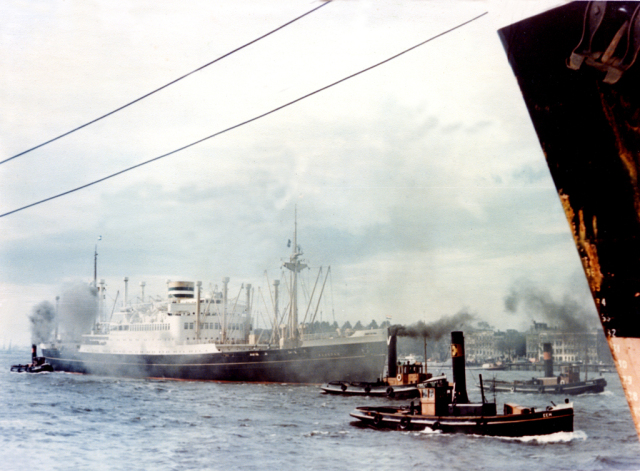
The ms Noordam (II) in peacetime colours.
In July 1956 he returns to the ms Noordam (II) where he had spent most of the war as 3rd officer but is now her Chief Officer. His assignment here lasts just over 12 months, making 10 return voyages to New York after which he is promoted to Captain in September 1956. Due to the quick expansion of the company with all the new ships and a number of older captains retiring, Van Gemert does not even make it to the flag ship, the ss Nieuw Amsterdam, as a chief officer. In a short period quite a few of his colleagues are promoted as well to fill all the gaps. If he had been the only promotion then he would have moved from the ss Nieuw Amsterdam to the ss Blijdendijk, the slow moving liberty which was considered the junior ship of the fleet. But he did not pull the short straw and ended up on the ss Abbedijk.
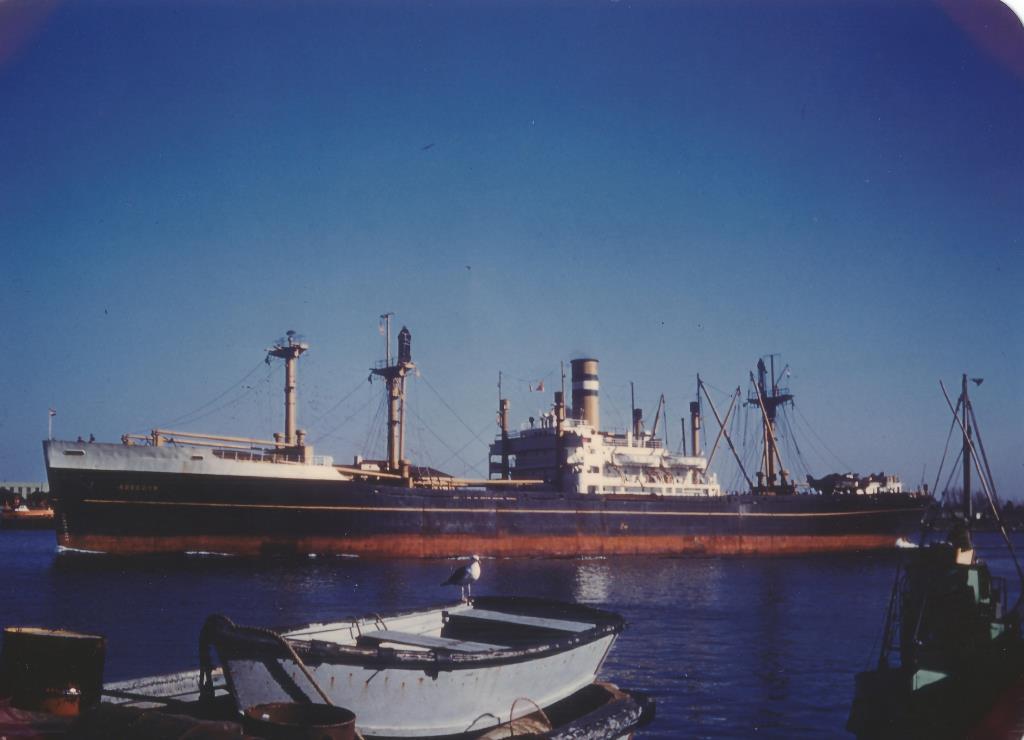
The ss Abbedyk on 22 December 1956 in Los Angeles (San Pedro) harbor.
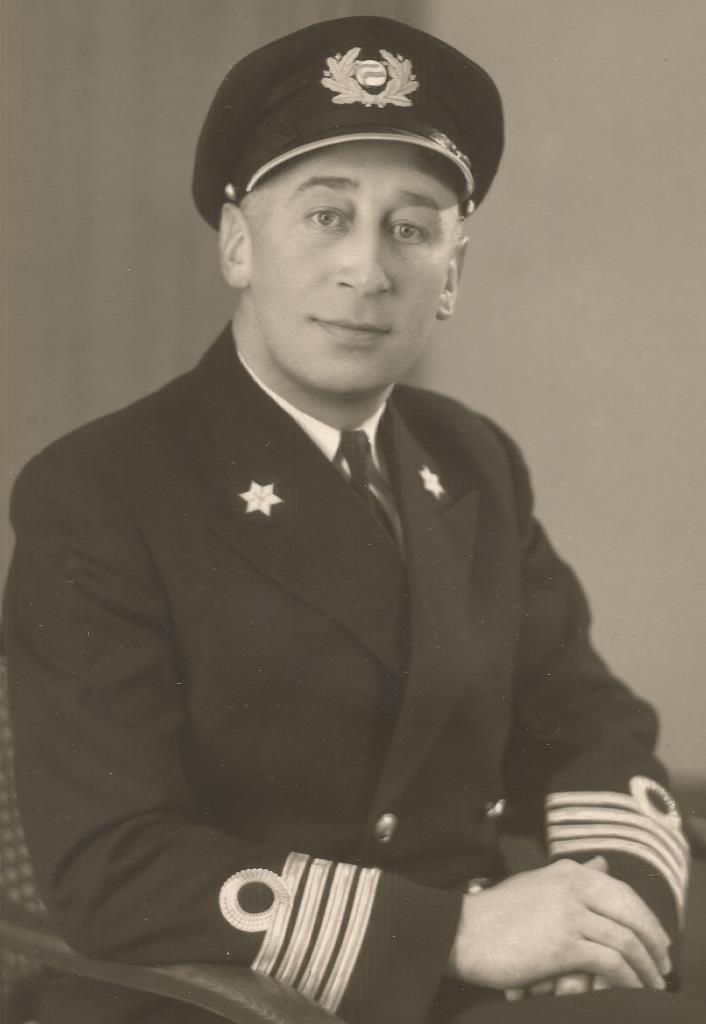
1956 Holland America’s newest Captain; “George” van Gemert.
What did not change was the “ship hopping” which was part of the seniority process and which eventually, if there were no others ahead of you with more seniority and younger in age, would see you sailing on the Flag Ship of the company.
His war time malaria kept popping up on occasion and he was ashore for six months between September 1957 and March 1958. There was another spell in Oct. 1959 which caused a admission to the Beekman hospital in New York. While off the ship the Chief Officer assumed command until Captain George returned. There was another attack in 1966 which caused him to be off the ship for 10 months and then a final one between January and May 1969. One can assume that this had some influence on his general health which would eventually result in his early retirement.
Thus in a span of 3 years he sailed on the Abbedijk, Kloosterdijk, Soestdijk and the Sloterdijk. In March 1959 he is given one complete voyage of leave between 02 March and 14 April and his place is taken up by Capt. Hein Hogervorst. These 6 weeks of vacation must have been carefully planned as Captain Van Gemert was going to be married. At that time he had just passed his 40th birthday. Most people would have married earlier but with sailors you never know as leaves are short and female company is rather sparse on the cargo ships. Although he had been surrounded by a lot of Ladies onboard the Noordam during the war, including entertainers, nurses and secretaries, rules in regards to mingling were very strict and a having a relation on board would give reason for instant dismissal.
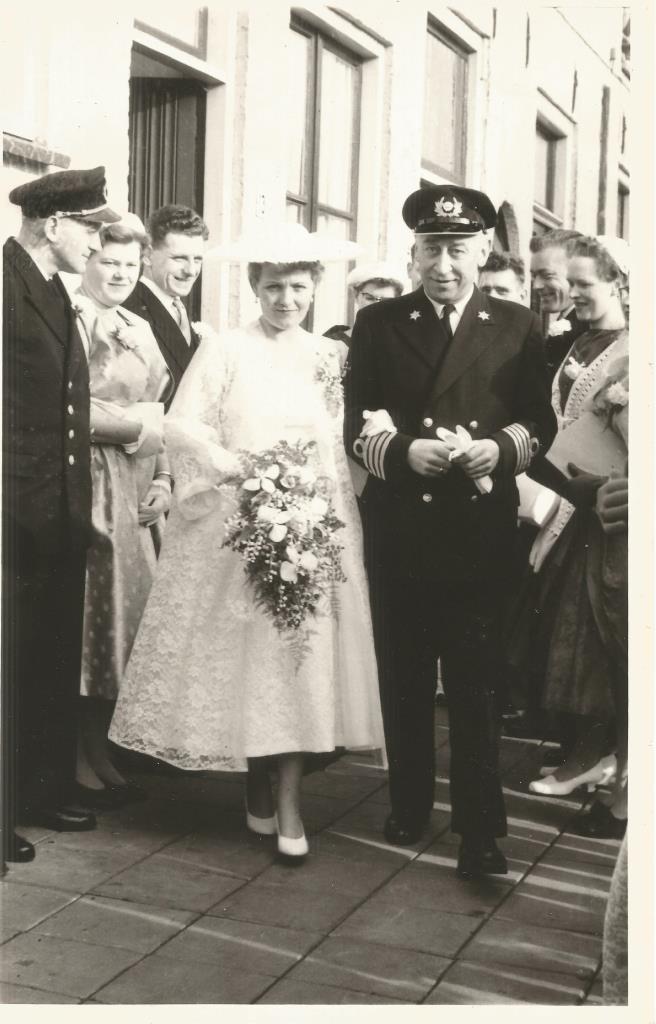
14 March 1959 Wedding Day.
Still where there is a will there is a way and in 1958 while Captain on the ms Sloterdijk he met a Dutch Lady who was on her way home from Los Angeles to Holland for vacation. She had worked there as a nurse thus met the Captain on board. They had a vacation together and then she sailed on the ship of Captain George to New York where she worked for three months. Then he arrived with his ship there to take her back home and marry her. On 07 March 1959 he officially marries Wilhelmina “Mientje” Hendrika, Johanna Kramer (22 July 1922 -Joure – June 1 2008 Amersfoort) in her hometown of Joure in Friesland
A month later he is back on his ship and the ship hopping continues and in the next 4 year period he sails on the Sloterdijk (II), Kinderdijk, Alblasserdijk, Amsteldijk, Arendsdijk, Andijk (II), Kamperdijk, Schiedijk, Axeldijk, Gaasterdijk (II), Almdijk, Gorredijk (II), Grotedijk (II), Grebbedijk, Kamperdijk, Dinteldijk (II) etc.
The marriage is blessed with two sons, Michiel born in 1959 and Maarten born in 1960. By the late sixties Holland America was one of the last shipping companies to change its policy of allowing wives and family to sail with the ship the father was serving on. Hence, once old enough, mother and the two boys sailed with him on the ms Grebbedyk in 1973 (Voy. 66)
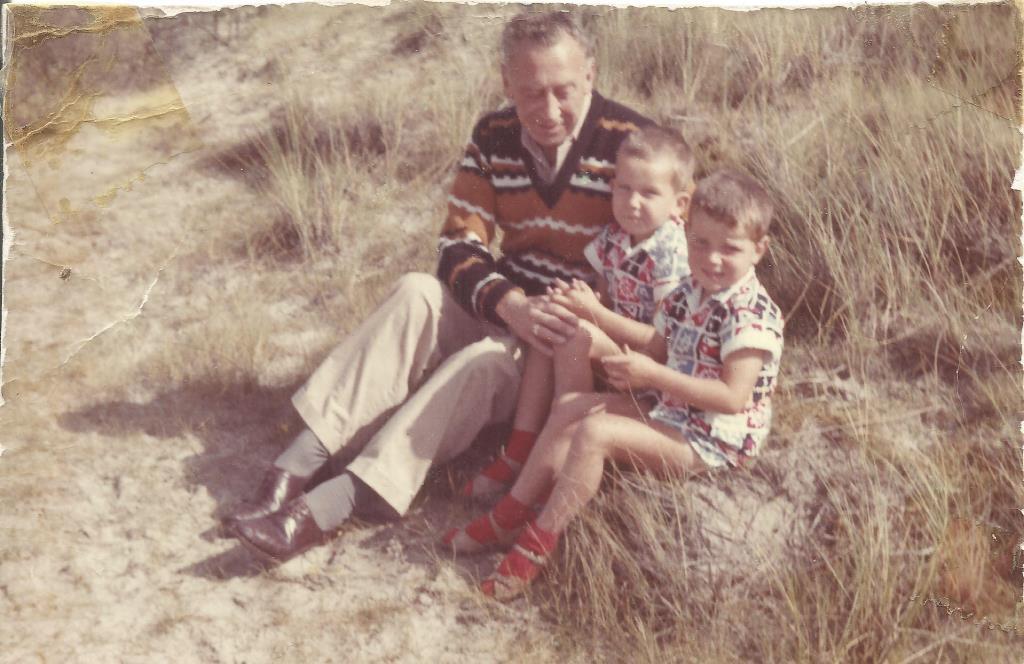
The two sons of the Captain. Undated photo but from around 1962/ 1963
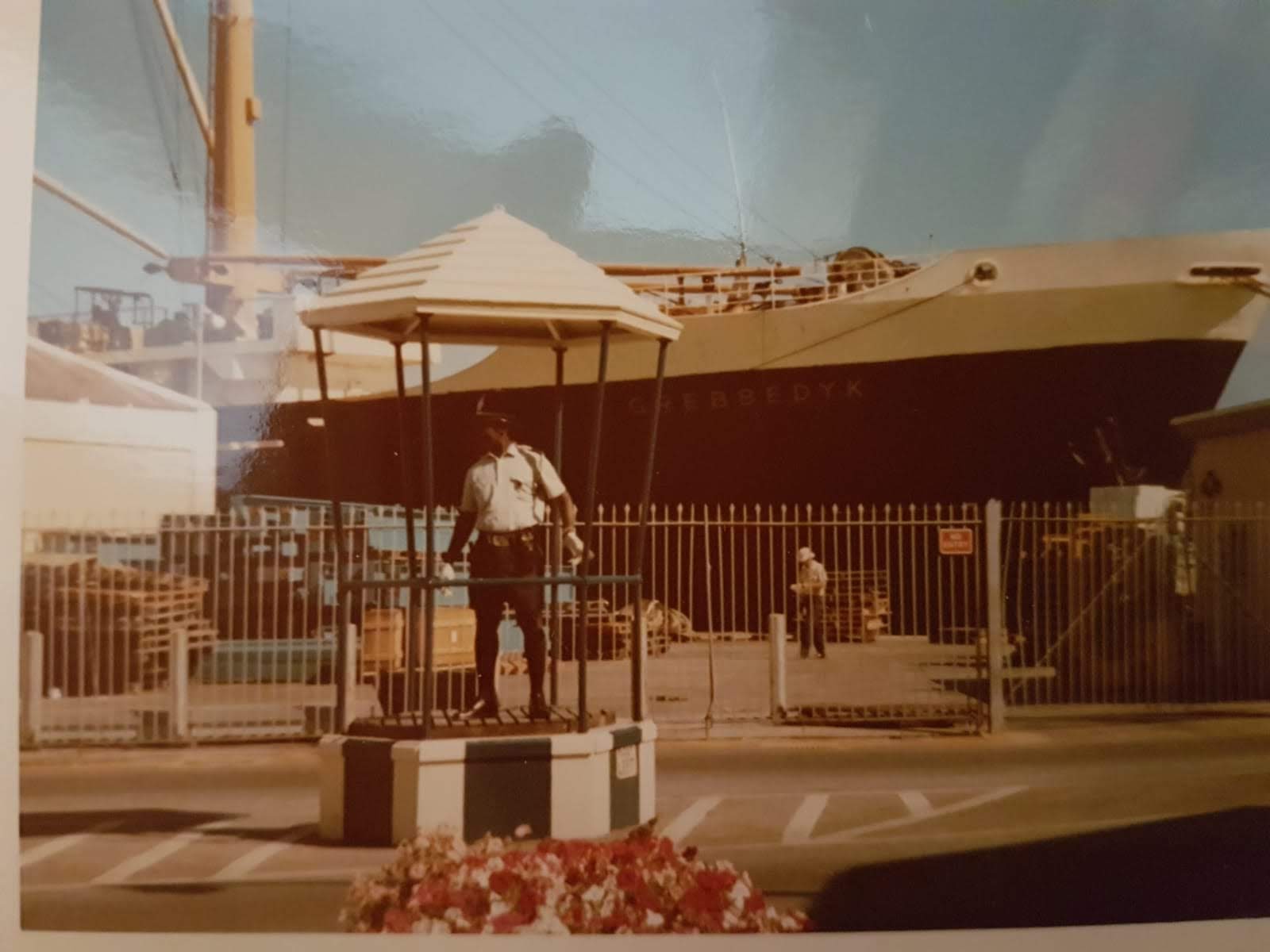
With the family on board. the ms Grebbedyk docked in a Caribbean Port.
Having your dad as the captain gave a number of privileges. The sons recall meeting the passing passenger ships, when after a crossing the shipping routes came close together again near the home ports, with the waving and the blowing of the whistles.
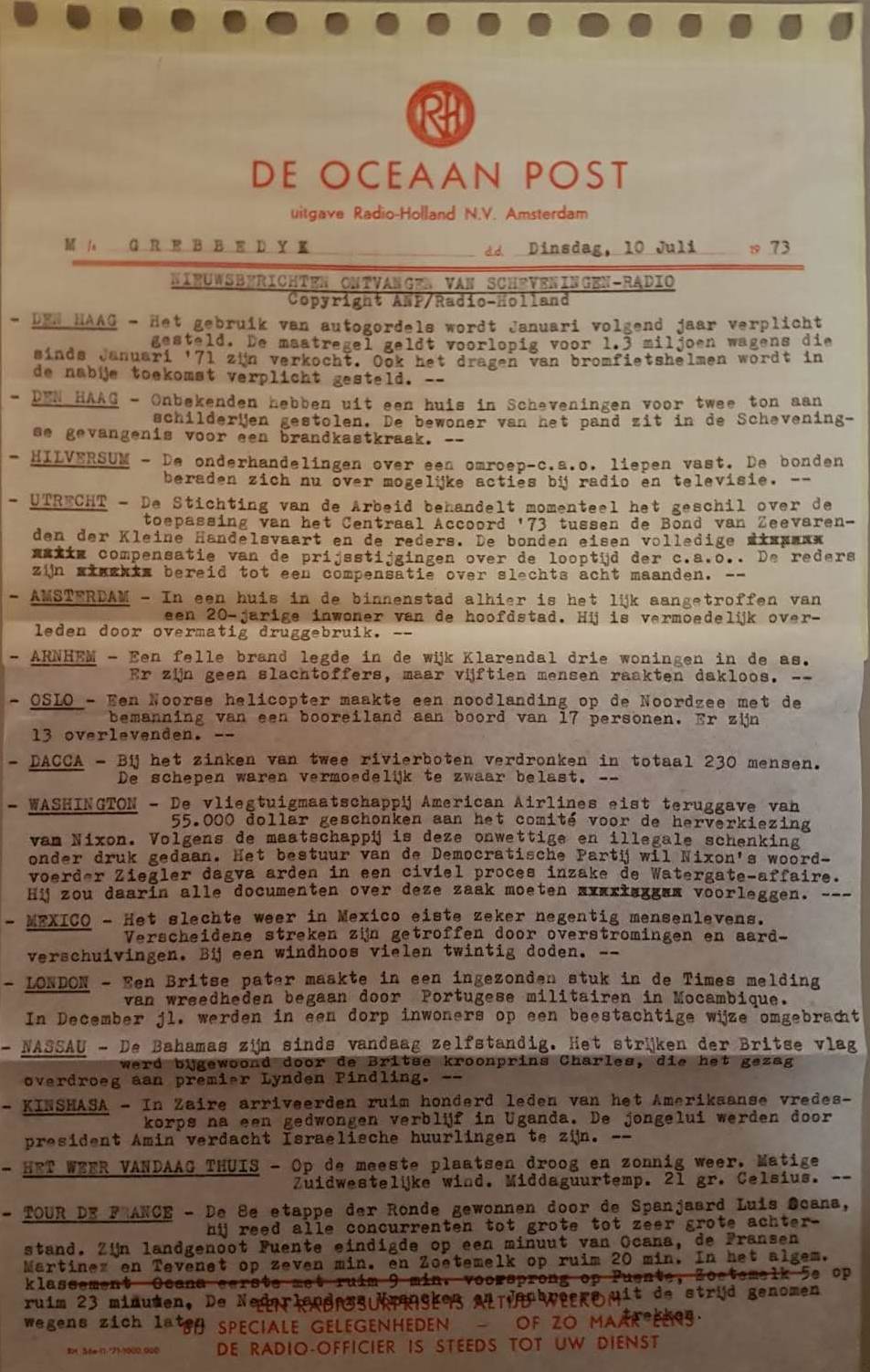
The Dutch News from 10 July 1973. (If you want to read the news, click on the picture or pull the corners)
The excursions in the ports of call, being driven around and seeing sights beyond believe. (ED: in most ports, he captain was always offered the use of a car by the ships agent.) Seeing how the New World lived, with houses with a pool and a separate bathroom for the children. Something unheard of in 60’s and 70’s Holland. And seeing your Dad in command. The crew just followed orders but in family life an extended discussion might have been normal, so this was also different. And the most amazing thing, while at sea, you still received a news paper everyday.
Still seeing that a father as a Captain is somewhat different that a father at home, was something that was learned quickly, also by two little boys. And it gave good memories, Captain van Gemert was able to run a “ happy ship”, by being strict but reasonable and keeping clear lines of responsibility and respect among the officers and crw.
Being children on board, especially being the captains children, gave unfettered access to the bridge, the option to stand navigation watches, to plot the ships course and work with the navigation instruments. All of the above reasons enough to start dreaming to become a captain as well in later life. However both son’s paths in life diverged from what was dreamt on board and they did not follow in their father’s footsteps. But the sea broadens the mind and put things in perspective and those experiences remained with them for the rest of their lives.
The records do not indicate much excitement during those years. But there were some happenings that changed the daily & safe routine of a Ship’s captain. On 28 December 1961 he stops the Schiedijk to save a 27 year old American Sports fisherman while sailing close to Newport News. The man had falling overboard while trying to untangle his fishing line from the propeller of this boat. After regaining consciousness he USCG took him off the ship. Which was not that necessary but after calling the shore side the captain was told that no doctor was available when he would arrive, so the USCG was called. The incoming Coast Guard crew also brought the wife of the fisherman with them, who declared that hubby was not going fishing again for a long time.
A sad moment was when on 05 April 1964 he had to leave the ship in Savannah to fly home as his father had passed away. The Chief Officer who took over until Captain Roel ten Kate was flown in to take over.
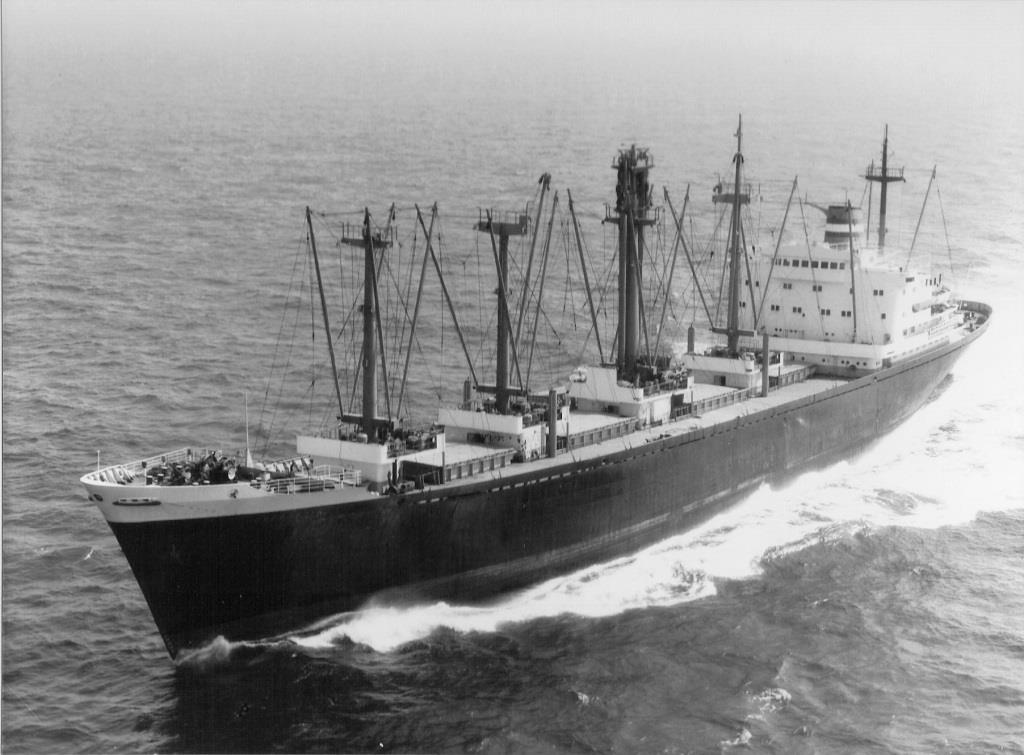
The ms Grebbedyk. This was a ship of the G class and had names which were real Dutch tongue twisters: Grebbedyk, Gaasterdyk, Grotedyk, Gorredyk
In the mid 50’s the company realized that the A class of Victory ships needed to be phased out in the coming years. The Victories had been war built with a focus on quantity and speed of delivery over quality and would thus not last that long. A replacement program was started and the K Class of Dutch built ships was taken into service and hence those names also pop up in the captain’s ships list. Because of the phasing out of the Victory class Captain van Gemert sails in February 1961 the ss Arendsdijk out of service. The ship is sold to a company who still sees use for her. With more and more Victories going out of service the next new group of ships is the G class and thus the Captain is assigned to those as well. In between he also sails on the Kamperdijk which was a modified K class ship as it was container friendly. The company started to experiment with containers as a sign of things to come. All the ships listed sailed on the New York, East of Mexico, Gulf service as the company was reducing its presence on other routs such as South America and the Far East. The latter was fully taken over by the VNS (a joint venture of several Dutch Shipping companies from 1921) and Holland America loaned some of its ships and crew to this service.
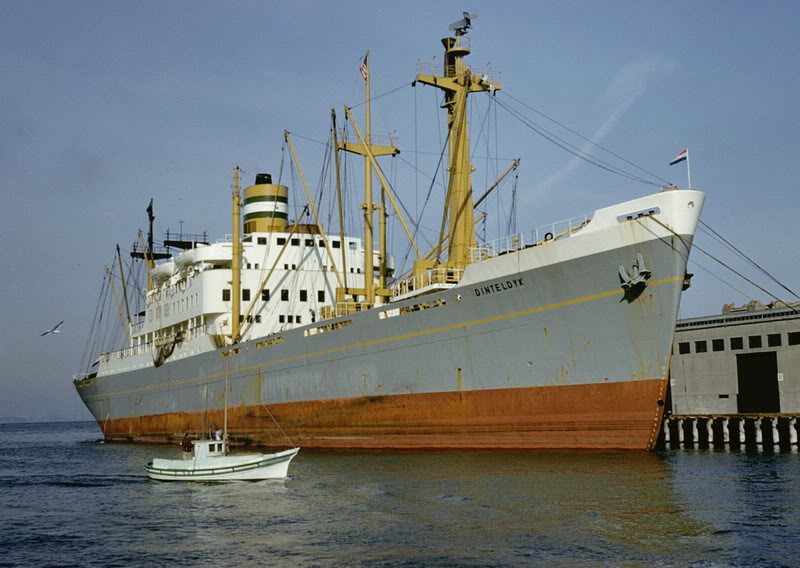
The ms Dinteldyk (II). As she was the flagship of the west coast fleet, she was initially the only cargo ship with a grey hull.
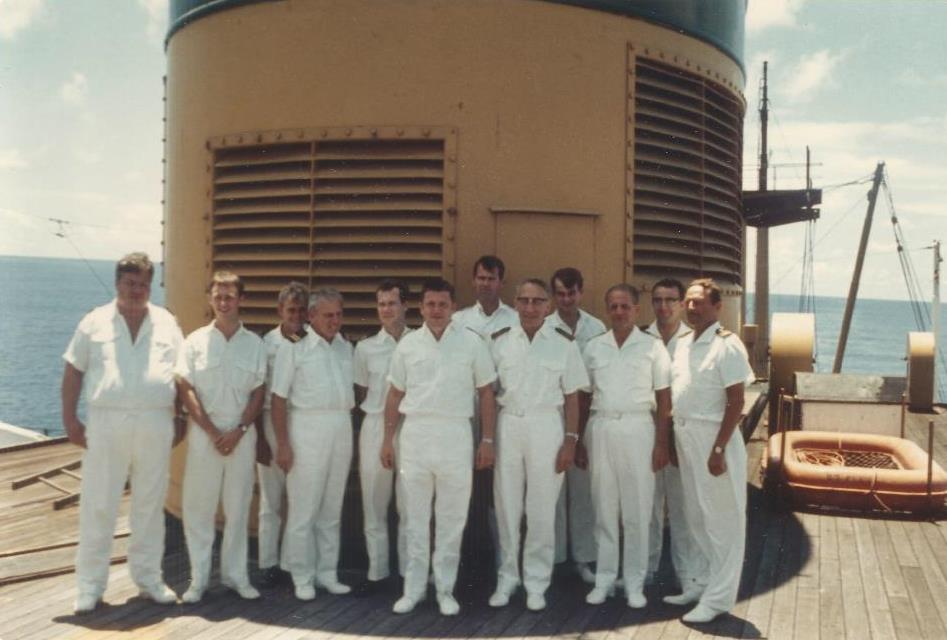
A groups photo on board the ms Dinteldyk (II) on 22 July 1968. Taken in front of the funnel.
Because so many chief officers faced a rapid promotion in the years after the war, it was not until 1968 that Van Gemert was assigned to his first passenger ship, the ms Dinteldijk. The D class of ships were passenger ships (as they carried more than 12 passengers) but also had a large cargo capacity and were all sailing on the West coast service. He had been chief officer on the Dongedijk on this service before his promotion to Captain. The Dinteldijk was considered the flagship of the West coast service and he remained with the ship for two years but then returns to the Gulf service with the ms Kamperdijk. Later on he moves to the G class ships again but still on the same routes.
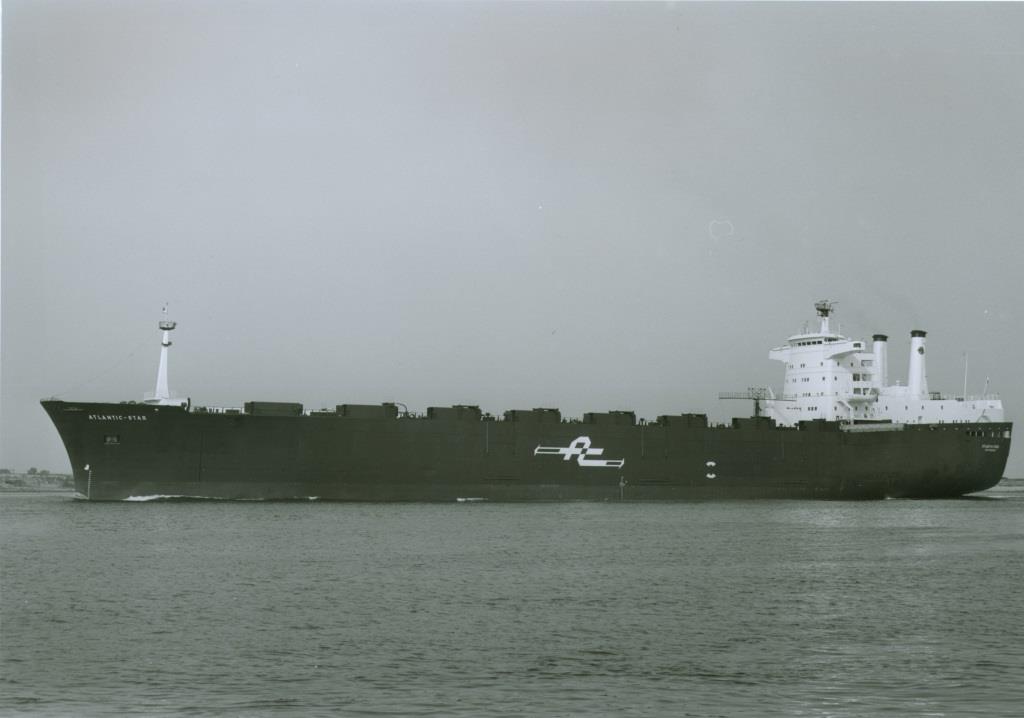
The ms Atlantic Star. One of a series of Ro-Ro container ships built for the Atlantic Container Line. Holland America participated with two ships, the Atlantic Star and the Atlantic Crown.
The containerization of the shipping industry was becoming more and more prominent and Holland America had to join in whether the Directors liked it or not. Containerships are expensive to build due to their box construction for the holds and thus the old rivals from the North Atlantic days got together and founded the Atlantic Container Line or ACL. Each participating company brought in two ships and the HAL participated with the Atlantic Star and the Atlantic Crown. The first one was for the multi-port slow service and the 2nd one for the express or fast service with fewer ports in the schedule. Apart from carrying containers it could also carry rolling material such as cars, trucks or anything else that could be rolled on board. For that purpose there was a ramp at the stern of the ship and a large garage under the superstructure.
George van Gemert was assigned to the ms Atlantic Star on 25 Oct. 1973 for the first time and sailed from Antwerp to Bremerhaven – Goteborg – Liverpool – Halifax – to New York. On the return voyage the ship called at Baltimore, Portsmouth, New York, Le Havre and the voyage ended in Antwerp. A round trip lasted one month and because changeover was near home there was the option to do one on-one off with your colleague if you wished to do so. Captain van Gemert took full advantage of this option.
Around this time Holland America decided to sell the cargo division to Bostrom of Sweden which would continue the division under the Dutch Flag as ICT or Incotrans. Investing in both cruise ships and containerships was not possible for HAL so a choice had to be made. The glamour won and Holland America went full time cruising. The officers and crew on the ships had to make a decision of which way to go. Incotrans offered a better pension scheme and HAL offered glamour and less (perceived) boredom than the container ships. Captains close to retirement or with a preference for cargo went one way and the rest went the other way. Captain van Gemert was now very close to retirement and opted for a better pension.
The first thing that Incotrans / Bostrom did was to phase out the last of the conventional cargo ships. These would in due course be replaced by new container ships in 1978/1979. For his next ship it resulted in Captain function of being the company representative by first sailing out the ms Grebbedijk (March 1974) to Greece and handed over in Beaumont USA and then becoming a sort of training captain while being assigned to the ms Volta Wisdom.
This ship was the ex ms Korendijk which together with the ms Kamperdijk had been sold to Volta Lines of Ghana. The idea was that Ghana would start up its own shipping company and there was help from their National Bank for the financing. Hal provided the senior officers and Volta Lines the rest. Thus shortly before retirement Captain van Gemert was “promoted” to mentor and teacher of a large group of Ghanese who had the desire of going to sea. A liner service was setup between Rotterdam and ports on the west coast of Africa. He only makes one voyage on her between April and August 1974. Then he returns to the G class ships. Why only one voyage we do not exactly know. (****)
(****) ED: We cannot ask the captain but I sailed during my cadet year with a number of officers who had sailed on the Volta ships as well and who were not impressed. “Bewildered” would be the better word. The crewing took place outside the influence of the HAL group of officers on board and thus it was never known, how many crew would show up, what their skills were, how long they would stay and how much work they would do. As there was a lot of family from the shore management involved, attitudes towards work and rest hours could be very creative. Most officers found it very interesting to visit the African ports, ONCE. And asked to be returned to the mother company. Volta Lines never became the success that was hoped for.
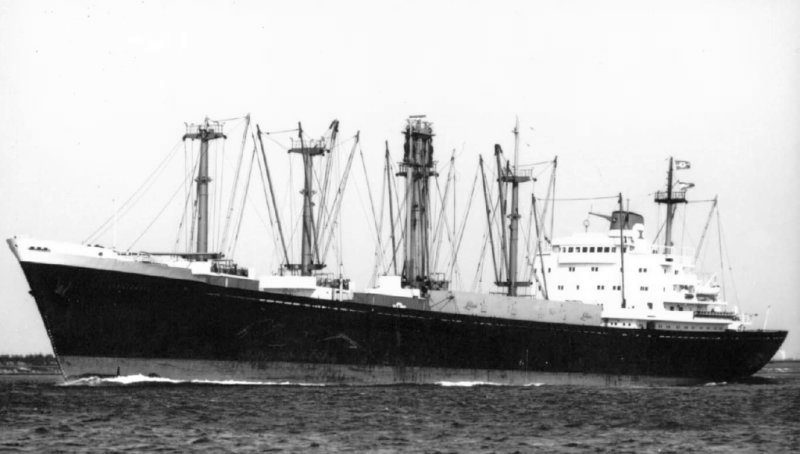
The ms Gaasterdyk (II). Please note the funnel colors. This green funnel had a white “anchor” shackle as logo.
In the meantime Incotrans had become part of a joint venture with the British Royal Mail Line, the British Harrison Line and the German Hapag Lloyd; and this group was called the Combi –Line or CAS. (Central America Service) Some of the G ships remained on the East Mexico service but the rest went to the CAS. They called at the same ports on the West coast of Middle and North America as they had always done. On this service Captain van Gemert made his final voyage:
03 March 1976 to 30 April 1976. Gaasterdijk voyage 89
Amsterdam – Antwerp – Sheerness – Le Havre – Cristobal – Punta Arenas – Acajutla – Amapala – Cutuco/ La Union – San Jose do Grande – Punta Arenas – Balboa – Cristobal – Antwerp.
Captain George started to have issues with walking and became less agile than what was required for his job. While on sick leave he was awarded, in October 1976, the silver medal by the Royal Dutch Meteorological Institute (KNMI) for the weather observations during his career.
His health did not improve, so while still off the ships, the company offered him early retirement which he accepted. The Company arranged a farewell party on 23 Nov. 1978 and this is the date of his official retirement, two years after leaving the sea.
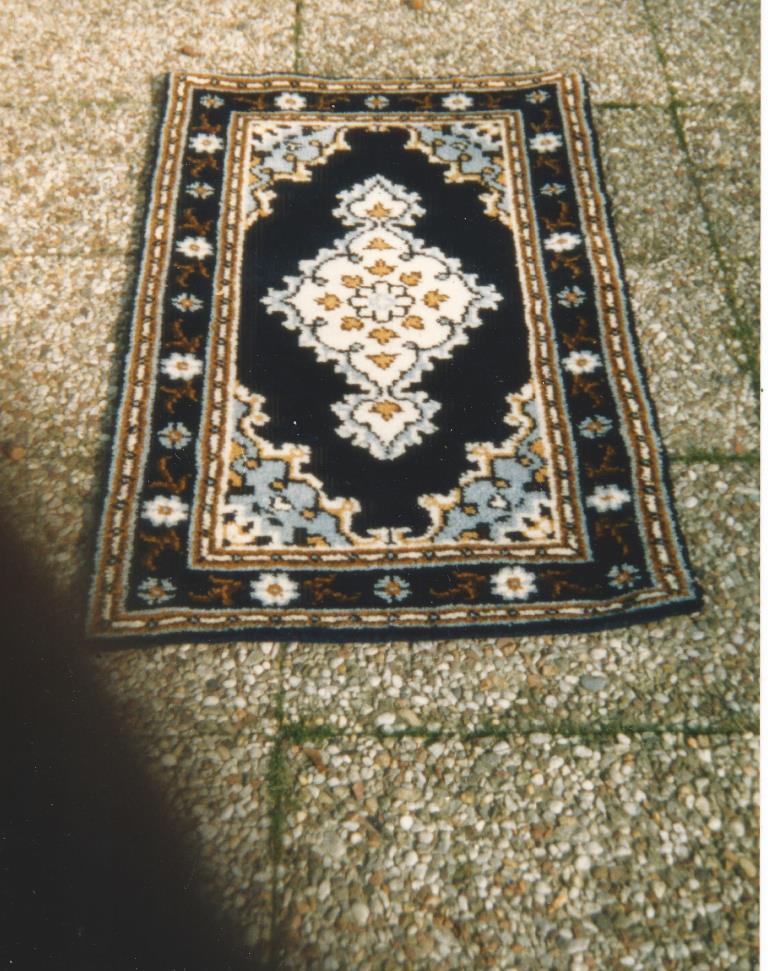
One of the captains creations. A hand knitted carpet. He was a wise man as he understood that you needed a hobby for when your sailing days were over.
What do you do when you retire as a captain? First of all, spend a lot of time with your wife and family as sailing took away at least 75% of the time others would have had, who worked ashore. Secondly find a hobby to fill the void of no longer running a ship. Captain van Gemert found relaxation in knitting carpets. Then there was biking in his home county of Brabant, keeping abreast of Dutch politics (never boring) and closely following two soccer teams. (NAC of Nijmegen and Feijenoord of Rotterdam)
The captain enjoyed 16 years of retirement before an acute heart failure took his life. He passed away on 10 Jul. 1992 in the town of Deurne, The Netherlands at the age of Seventy four.
Career Overview.
Date: Function: Ship: Wages and/or remarks.
06 Aug. 1937
01 Jun. 1938 Signs on with the Rotterdamsche Llloyd
04 Jun. 1938 Cadet Officer Blitar 04 Oct. 1938
xx Oct.1938 Cadet Officer Unknown xx Mar.1939
31 Mar. 1939 Obtained 3rd mates license
30 May.1939 Joins the Holland Amerika Lijn after interview.
07 Jun. 1939 4th. officer Westernland (1A) 04 Jul. 1939 (Maiden Voyage)
For a wage of FL 102,–
08 Jul. 1939 Signs on with the Holland Amerika Line on Open Contract. (e.g. no ending date)
06 Jul. 1939 4th. officer Westernland 11 Aug. 1939
06 Sep. 1939 4th. officer Maasdam (079) 21 Nov. 1939
28 Nov. 1939 4th. officer Maasdam (080) 27 Jan. 1940
07 Feb. 1940 4th. officer Maasdam 08 Feb. 1940 (one day)
07 Mar. 1940 4th. officer Pennland 25 Apr. 1941 Sunk in the Med.
Transfer as passenger on various ships back to Liverpool
Wages until 06 Jun. 1940 Fl 107.50
Then until 06 Jun. 1941 Fl 110,–
Then until 01 Oct. 1941 Fl 112,50
27 Aug. 1941 4th. officer Delftdijk 29 Jan. 1942 Liverpool.
Wages until 03 Mar. 1942 fl 117,–
30 Jan. 1942 4th. officer Edam 17 Feb. 1942 New York
09 Apr. 1942 3rd. officer Noordam 16 Aug. 1945 at New York
Wages from 09 Apr. 1942 Fl 139.,– until 31 Dec. 1942
Then from 09 Apr. 1943 Fl 161,–
Then from 09 Apr. 1944 Fl. 166,–
17 Aug. 1945 3rd officer Leerdam 12 Sep. 1945 Rotterdam
Back to school for 2nd mate license. Carried out port watches in Rotterdam between school days as the ms Noordam was being converted back into a passenger ship.
15 Feb. 1946 Obtained 2nd mates license
19 Jul. 1946 3rd officer Noordam 16 Aug. 1946 Rotterdam
23 Aug. 1946 3rd. officer Noordam 20 Sep. 1946 Rotterdam
23 Sep. 1946 3rd. officer Noordam 25 Sep. 1946 Rotterdam
27 Sep. 1946 3rd. officer Noordam 25 Oct. 1946 Rotterdam
01 Nov. 1946 3rd. officer Noordam 29 Nov. 1946 Rotterdam
30 Nov. 1946 2nd. officer Fort Orange 23 Apr. 1947 Rotterdam
16 May. 1947 2nd officer Westerdam 25 May. 1947 New York
As passenger to go to the newly bought Aardyk. Joins in New York
19 Jul. 1947 2nd Officer Aardijk 17 Aug. 1947 Rotterdam
22 Aug. 1948 2nd officer Aardijk 14 Oct. 1947 Rotterdam
23 Oct. 1947 2nd. Officer Aardijk 21 Nov. 1947 Rotterdam
02 Dec. 1947 2nd Officer Aardijk 29 Jan. 1948 Rotterdam
03 Feb. 1948 2nd Officer Aardijk 13 Mar. 1948 Rotterdam
25 Mar. 1948 2nd Officer Aardijk 21 Apr. 1948 Rotterdam
21 Jul. 1948 2nd Officer Leerdam 04 Sep. 11948 Rotterdam
24 Nov.1948 Obtained 1st mates (Masters) License
07 Dec. 1948 2nd Officer Leerdam 29 Jan. 1949 Rotterdam
15 Feb. 1949 Chief Officer Leerdam 06 Apr. 1949 Rotterdam
20 Apr. 1949 Chief Officer Leerdam 04 Jun. 1949 Rotterdam
15 Jun. 1949 Chief Officer Leerdam 29 Jul. 1949 Rotterdam
10 Aug. 1949 Chief Officer Leerdam 27 Sep. 1949 Rotterdam
13 Oct. 1949 Chief Officer Leerdam ` 22 Nov. 1949 Rotterdam
24 Nov. 1949 Chief Officer Leerdam 05 Jan. 1950 Rotterdam
12 Jan. 1950 Chief Officer Leerdam 21 Feb. 1950 Rotterdam
24 Feb. 1950 Chief Officer Leerdam 02 Apr. 1950 Rotterdam
13 Apr. 1950 Chief Officer Leerdam 30 Apr. 1950 New York.
29 Apr. 1950 Chief Officer Soestdijk 06 Apr, 1951 New York
06 Apr. 1951 Chief Officer Noordam 16 Apr. 1951 Rotterdam
02 May. 1951 Chief Officer Arkeldijk 18 Jul. 1951 Rotterdam
20 Jul. 1951 Chief Officer Arkeldijk 04 Sep. 1951 Rotterdam
12 Sep. 1951 Chief Officer Arkeldijk 11 Nov. 1951 Rotterdam
23 Nov. 1951 Chief Officer Westerdam 07 Dec. 1951 Rotterdam
11 Jan. 1952 Chief Officer Dongedijk 15 Jan. 1952 Rotterdam
23 Jan. 1952 Chief Officer Aalsdijk 26 Jan. 1952 Antwerpen
11 Feb. 1952 Chief Officer Arkeldijk 18 Feb. 1952 Antwerpen
19 Feb. 1952 Chief Officer Dongedijk 22 Feb. 1952 Rotterdam
27 Feb. 1952 Chief Officer Dongelijk 28 Jun. 1952 Rotterdam
04 Jul. 1952 Chief Officer Dongedijk 11 Oct. 1952 Rotterdam
17 Oct. 1952 Chief Officer Dongedijk 21 Jan. 1953 Rotterdam
12 Feb. 1953 Chief Officer Dongedijk 08 May. 1953 Rotterdam
26 Jun. 1953 Chief Officer Dongedijk 05 Oct. 1953 Rotterdam
03 Nov. 1953 Chief Officer Dongedijk 13 Feb. 1954 Rotterdam
17 Feb. 1954 Chief Officer Dongedijk 16 Jun. 1954 Rotterdam
06 Jul. 1954 Chief Officer Dongedijk 03 Oct. 1954 Rotterdam
05 Oct. 1954 Chief Officer Dongedijk 21 Oct. 1954 Rotterdam
29 Oct. 1954 Chief Officer Dongedijk 12 Feb. 1955 Rotterdam
14 Feb. 1955 Chief Officer Dongedijk 16 Jun. 1955 Rotterdam
20 Jun. 1955 Chief Officer Dongedijk 07 Jul. 1955 London
08 Jul. 1955 Chief Officer Noordam 31 Aug. 1955 Rotterdam
30 Sep. 1955 Chief Officer Noordam 24 Oct. 1955 Rotterdam
09 Dec. 1955 Chief Officer Noordam 02 Jan. 1956 Rotterdam
06 Jan. 1956 Chief Officer Noordam 30 Jan. 1956 Rotterdam
03 Feb. 1956 Chief Officer Noordam 27 Feb. 1956 Rotterdam
02 Mar.1956 Chief Officer Noordam 26 Mar. 1956 Rotterdam
30 Mar. 1956 Chief Officer Noordam 23 Apr. 1956 Rotterdam
27 Apr. 1956 Chief Officer Noordam 21 May. 1956 Rotterdam
25 May. 1956 Chief Officer Noordam 08 Jun. 1945 Rotterdam
22 Jun. 1956 Chief Officer Noordam 16 Jul. 1956 Rotterdam
20 Jul. 1956 Chief Officer Noordam 13 Aug. 1956 Rotterdam
PROMOTION TO CAPTAIN.
06 Sep.1956 Captain Abbedijk 27 Mar. 1957
21 Jun. 1957 Captain Kloosterdijk 28 Jul. 1957
10 Aug. 1957 Captain Soestdijk 24 Sep. 1957
23 Mar. 1958 Captain Sloterdijk 19 Nov. 1957
17 Feb. 1960 Captain Kinderdijk 22 Feb. 1960
25 Mar. 1960 Captain Alblasserdijk ` 12 Nov. 1960
26 Nov. 1960 Captain Amsteldijk 01 Dec. 1960
04 Jan. 1961 Captain Arendsdijk 01 Mar. 1960
07 Mar. 1961 Captain Andijk 12 Mar. 1961
26 Apr. 1961 Captain Amsteldijk 03 May. 1961
17 May.1961 Captain Kamperdijk 25 May. 1961
23 Jun. 1961 Captain Schiedijk 11 Jul. 1961
25 Jul. 1961 Captain Axeldijk 29 Jul. 1961
23 Aug. 1961 Captain Kloosterdijk 03 Sep.1961
08 Nov. 1961 Captain Aardijk 17 Nov. 1961
26 Dec. 1961 Captain Gaasterdijk 05 May. 1963
25 Jun. 1962 Captain Almdijk 21 Jul. 1962
24 Jul. 1963 Captain Gorredijk 01 Aug. 1963
24 Aug. 963 Captain Grotedijk 04 Sep. 1963
27 Oct. 1963 Captain Kloosterdijk 01 Nov. 1963
06 Nov. 1963 Captain Almdijk 24 Nov. 1963
14 Dec. 1963 Captain Andijk 05 Apr. 1964
03 Jul. 1964 Captain Kloosterdijk 29 Mar.1965
01 May. 1965 Captain Grebbedijk 12 Sep. 1965
15 Dec. 1965 Captain Gaasterdijk 20 Feb. 1966
09 Dec.1966 Captain Kloosterdijk 30 Jul. 1967
27 Jan. 1966 Captain Kamperdijk 14 Jul. 1970
20 Sep. 1970 Captain Gorredijk 14 Nov. 1970
18 Dec. 1970 Captain Moerdijk 17 Mar. 1971
06 May. 1971 Captain Gorredijk 17 May. 1971
28 Jun. 1971 Captain Moerdijk 28 Nov. 1971
07 Feb. 1972 Captain Gaasterdijk 26 Mar.1972
12 Jun. 1972 Captain Grebbedijk 08 Aug. 1973
20 Sep. 1973 Captain Atlantic Star 31 Jan. 1974
01 Mar. 1974 Captain Grebbedijk 18 Mar. 1974
04 Apr. 1974 Captain Volta Wisdom 08 Aug. 1974
04 Nov. 1974 Captain Gaasterdijk 24 Dec. 1974
12 Feb. 1975 Captain Grotedijk 28 Sep. 1975
26 Oct. 1975 Captain Atlantic Crown 15 Nov. 1975
14 Jan. 1976 Captain Gaasterdijk 30 Apr. 1976
Retirement from the Sea at the age of 58.
Sources:
a. Paperwork from the Captain’s own Archives as made available by his son.
b. Archive of Capt. Albert Schoonderbeek
c. Operatie Demon. De rol en ondergang van de Nederlandse passagiersschepen Pennland, Slamt en Costa Rica. Henk Top.
d. 125 years of Holland America Line. Dalkmann & Schoonderbeek.
Photo Credits:
All photos come from the Captain’s own collection, except:
(a) Holland America Line
(b) Capt. Albert Schoonderbeek .Editor (ED)
Last Updated: 16 Nov. 2022
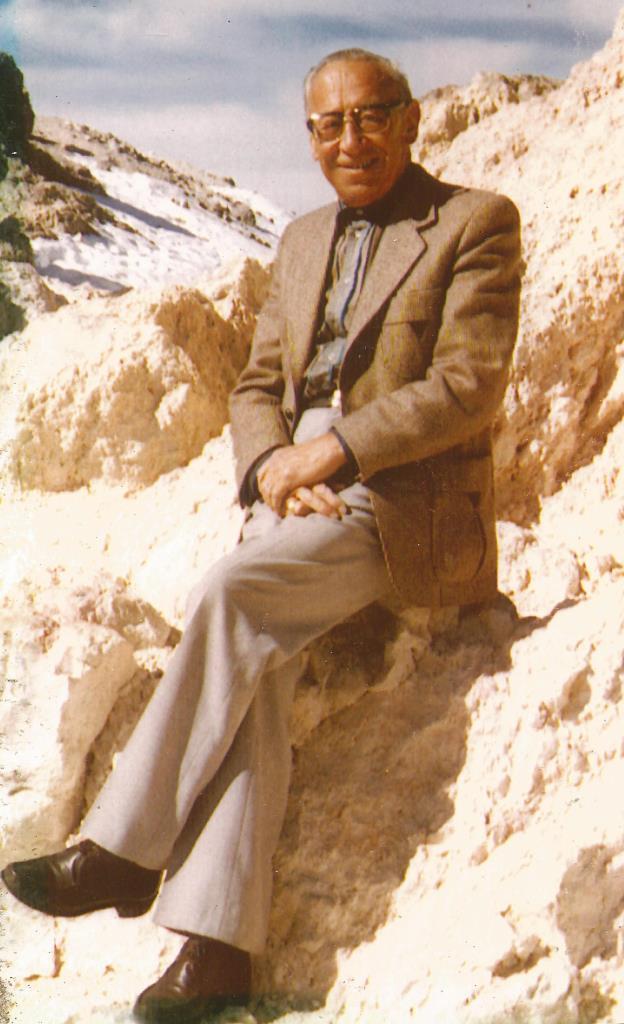

March 6, 2022 at 11:46 am
Hi, I have enjoyed reading about the life of Cap.G. Van Gemert. In particular when he was on the SS. Pennland which was hit twice by enemy fire on 25th April, 1941 off the Greek Islands and then sunk.
I am trying to find if the 4 crew deaths on the Pennland may have been the person I am researching. Albert Haffner who was a member of the crew when the Pennland set sail from New York.
March 6, 2022 at 7:53 pm
Good morning,
thank you for your comment. I looked up the list of HAL crew who perished in WWII but there is no Albert Haffner among them. That gives two options: a. he left the ship before it was torpedoed. According to my records the Pennland left New York for the last time on 24 June 1940 and the ship sank on 25 march 1941. So quite a time period were could have been transferred or have stayed behind in England. b. He was assigned to the ship as a Gunner or similar- non hal crew- function. In that case he would not show up in the HAL records as he would have fallen under the English or American entity which placed him.
I hope this helps
Best regards
Capt. Albert